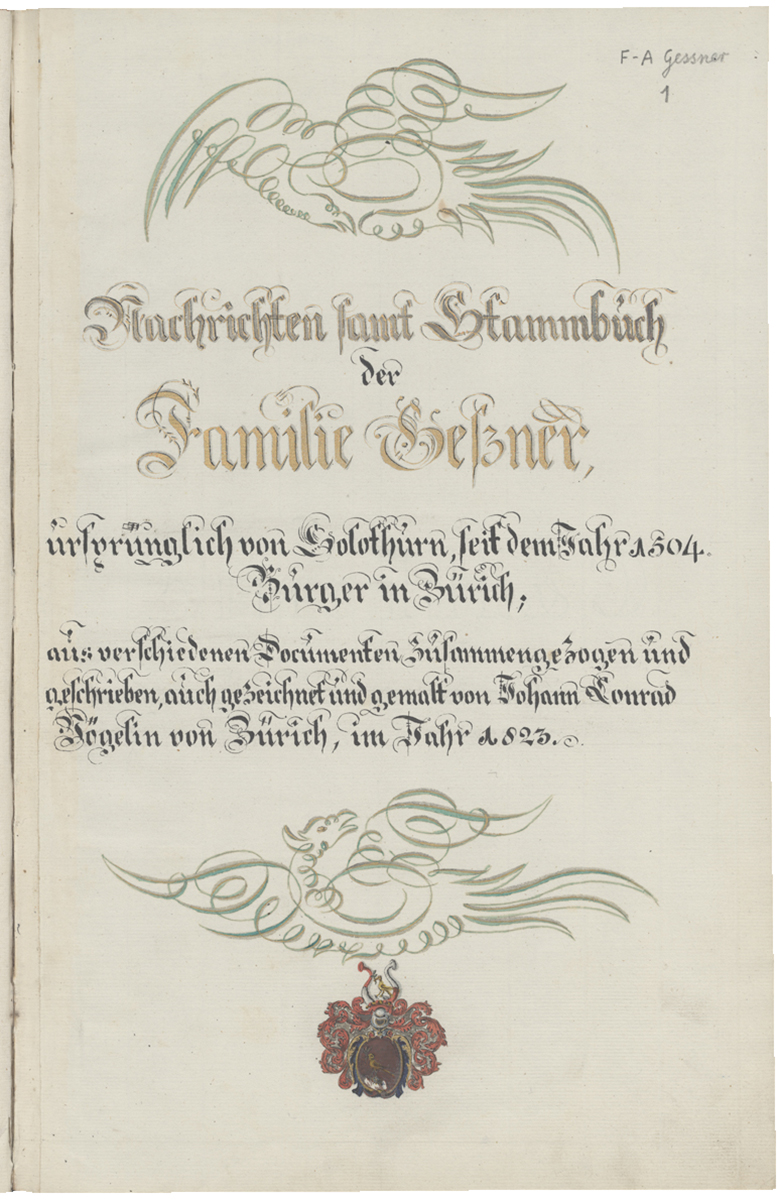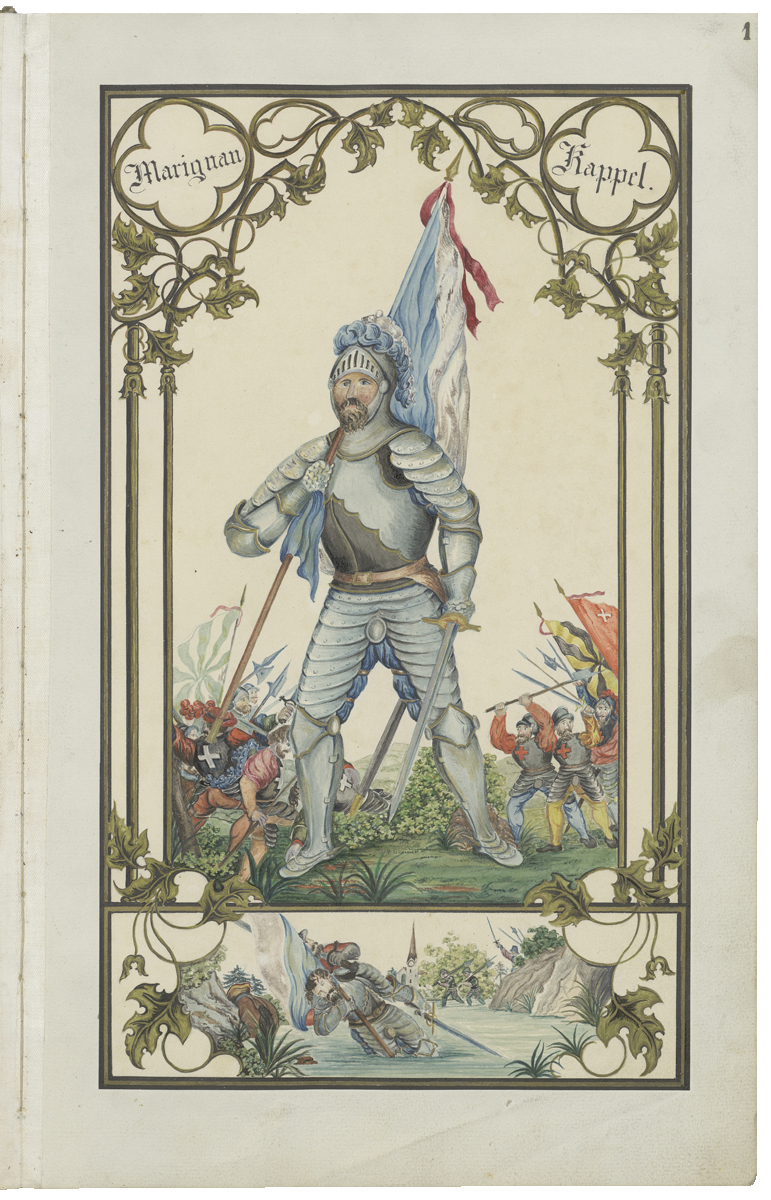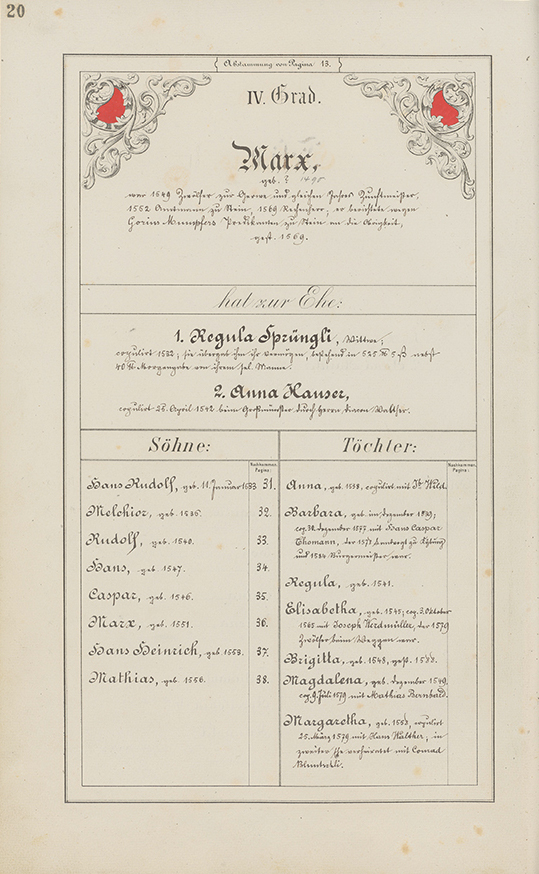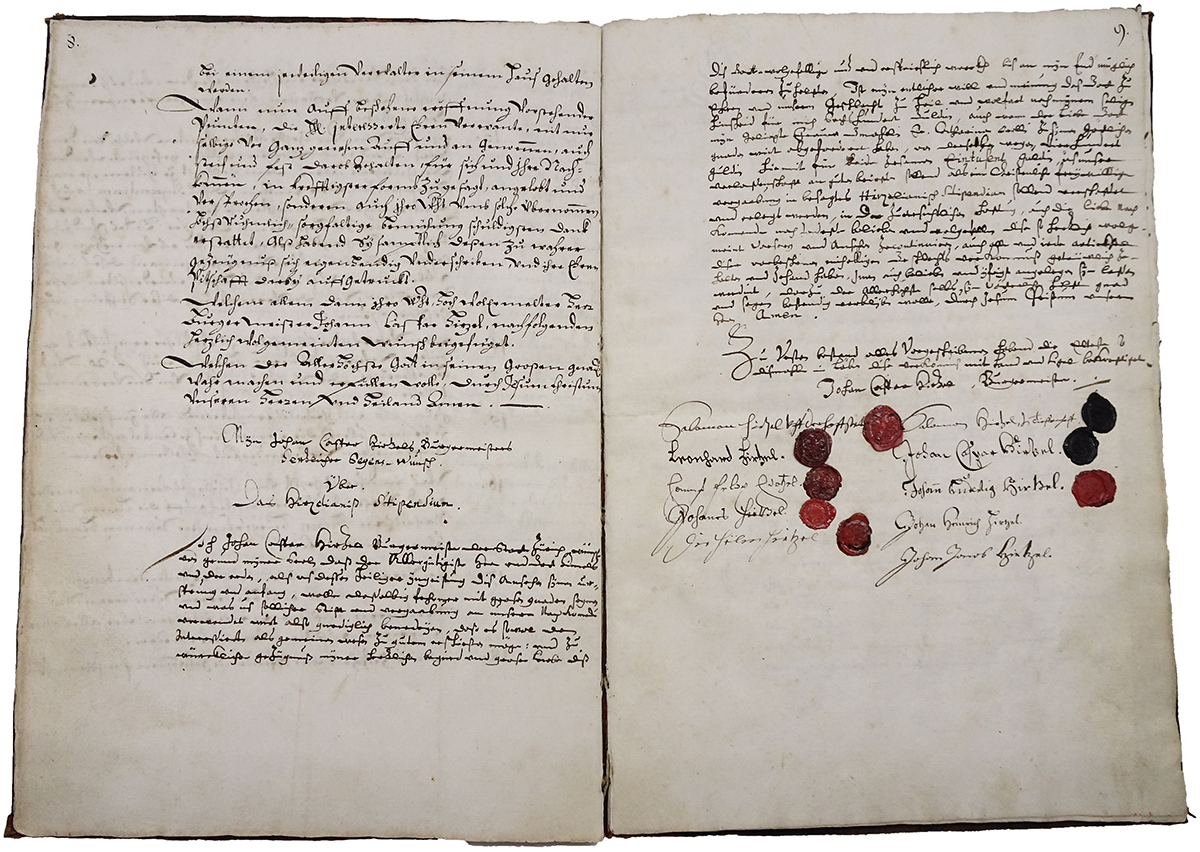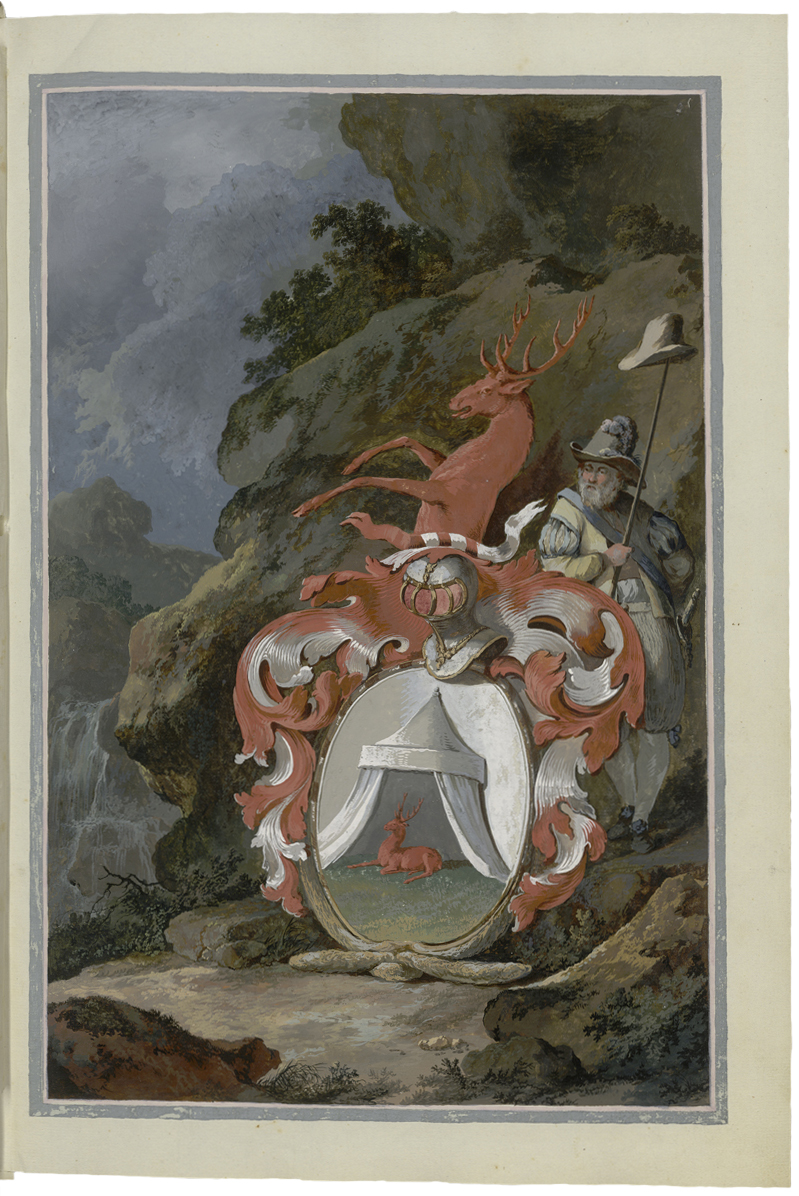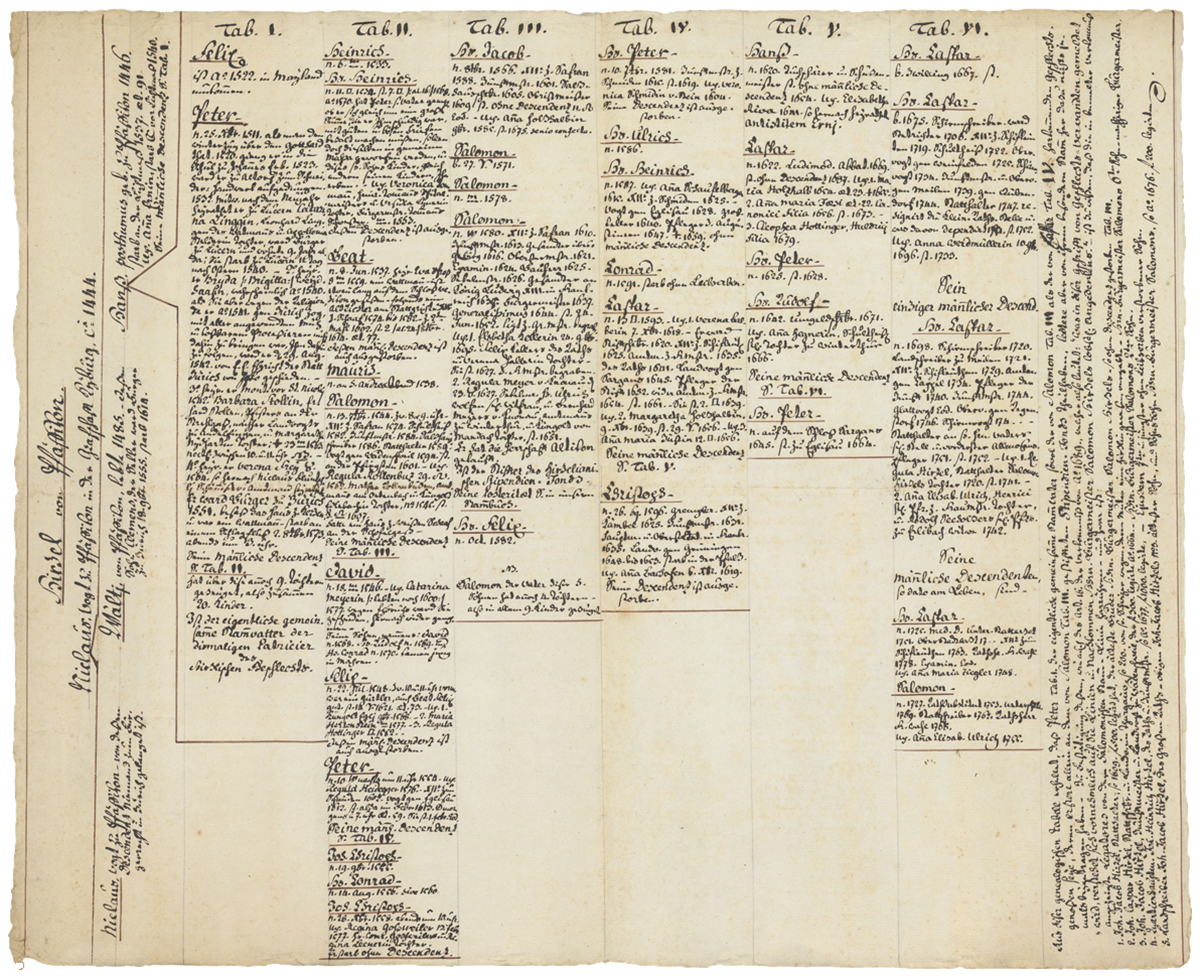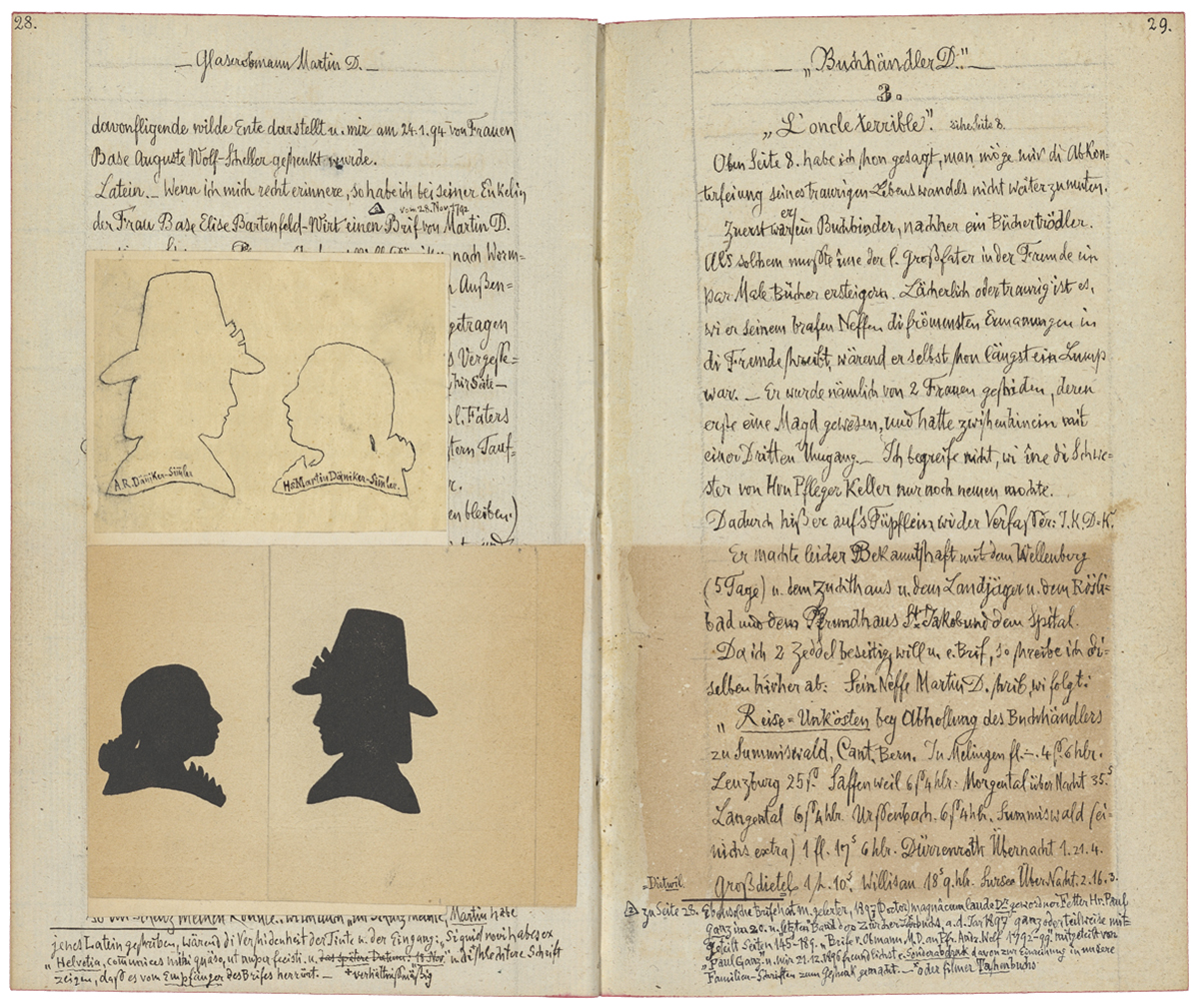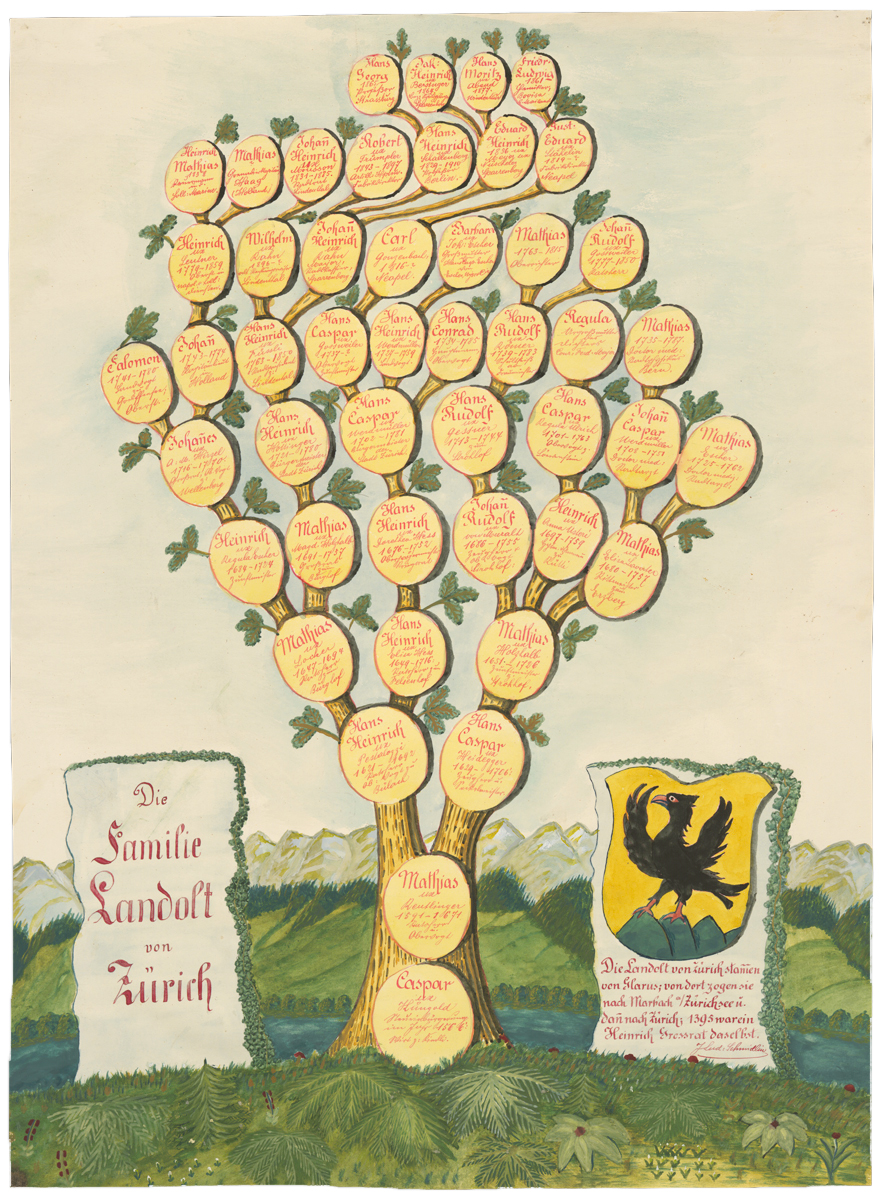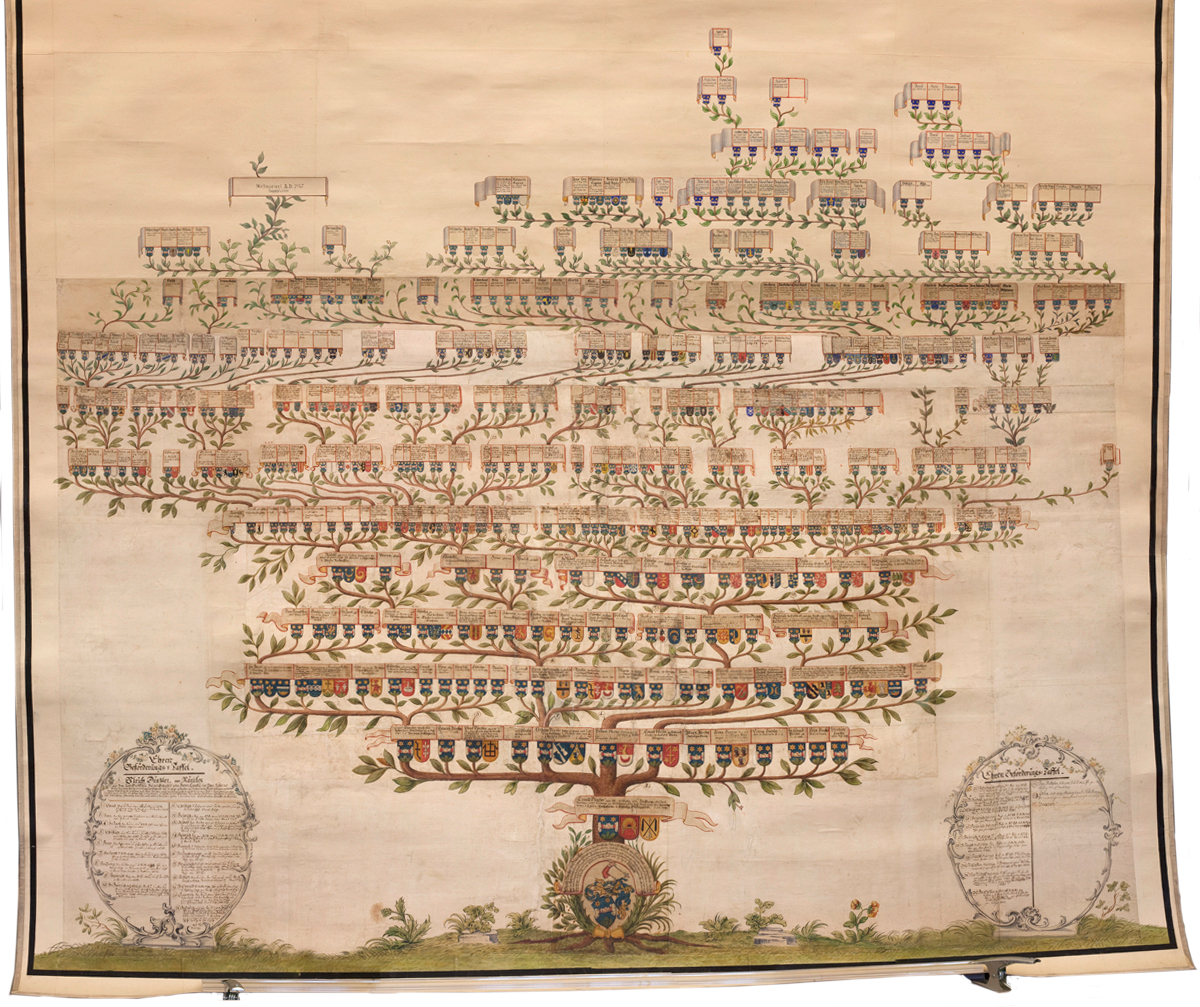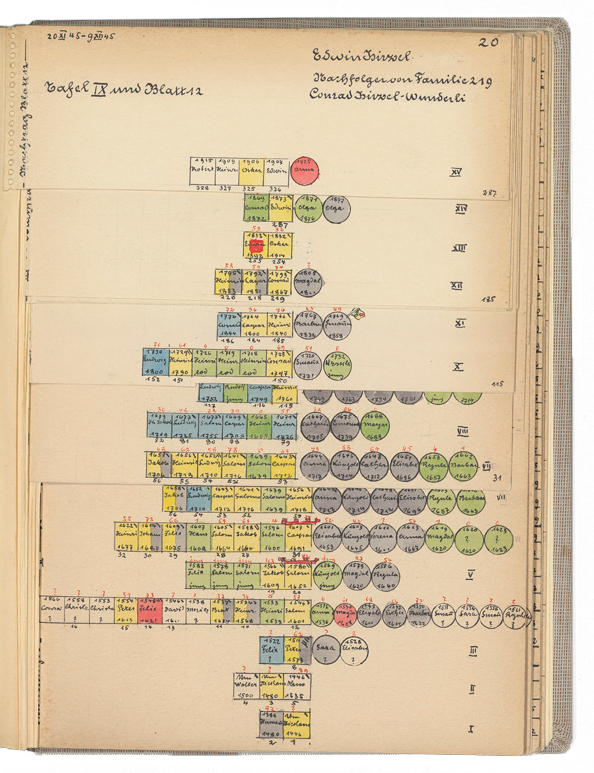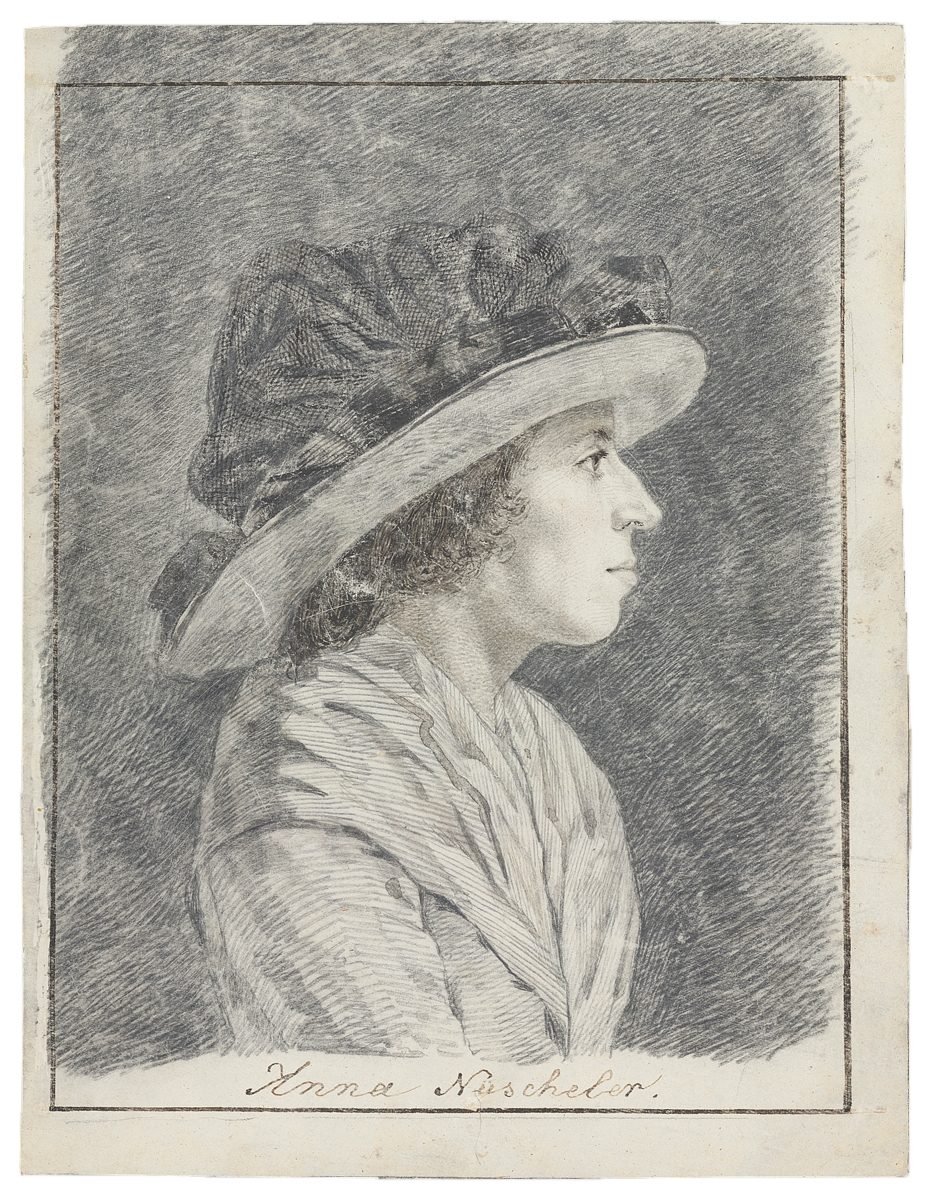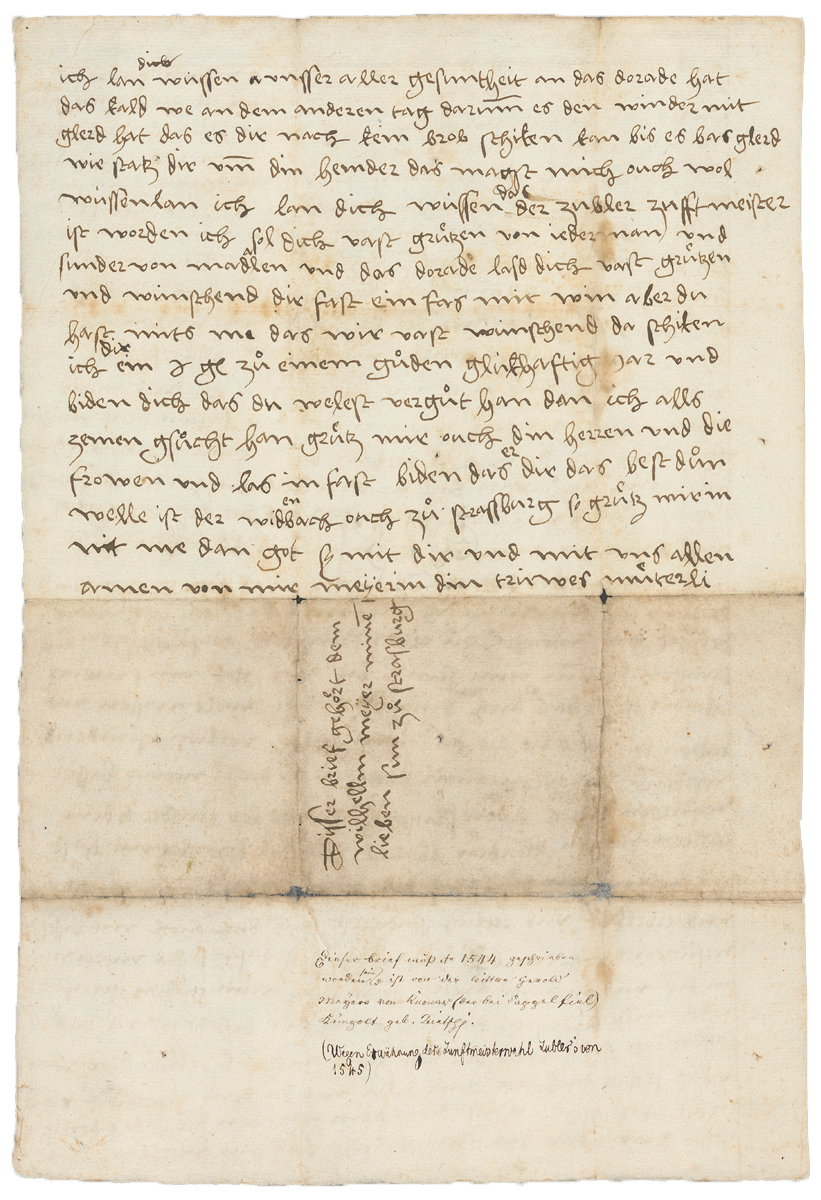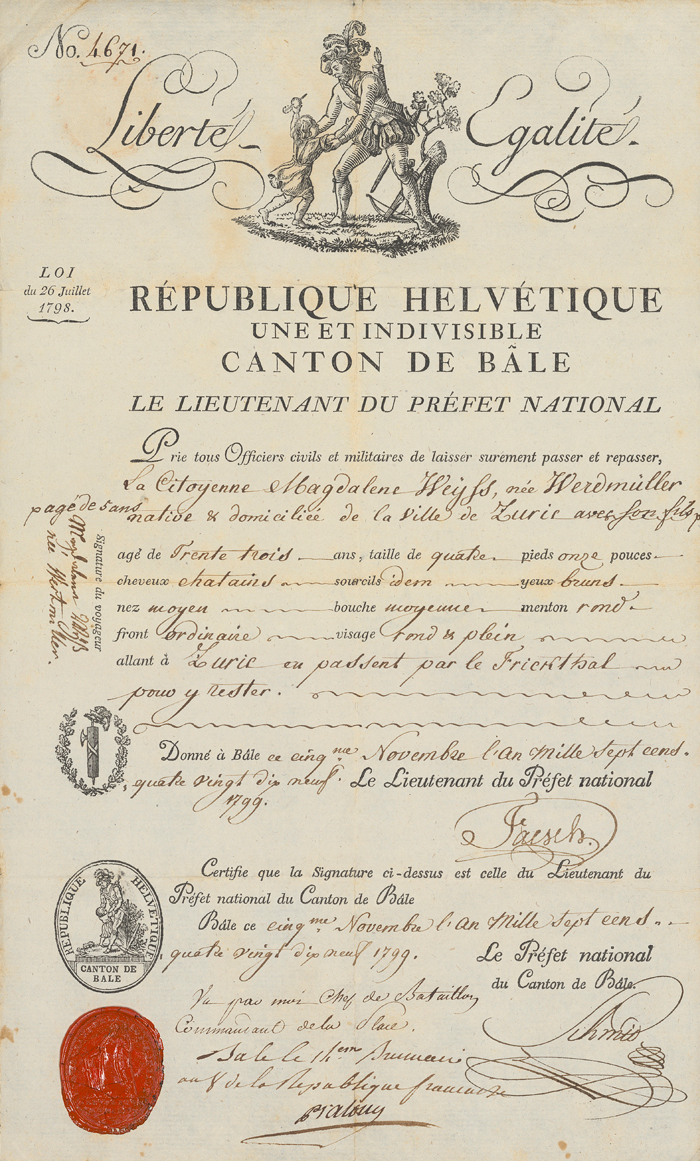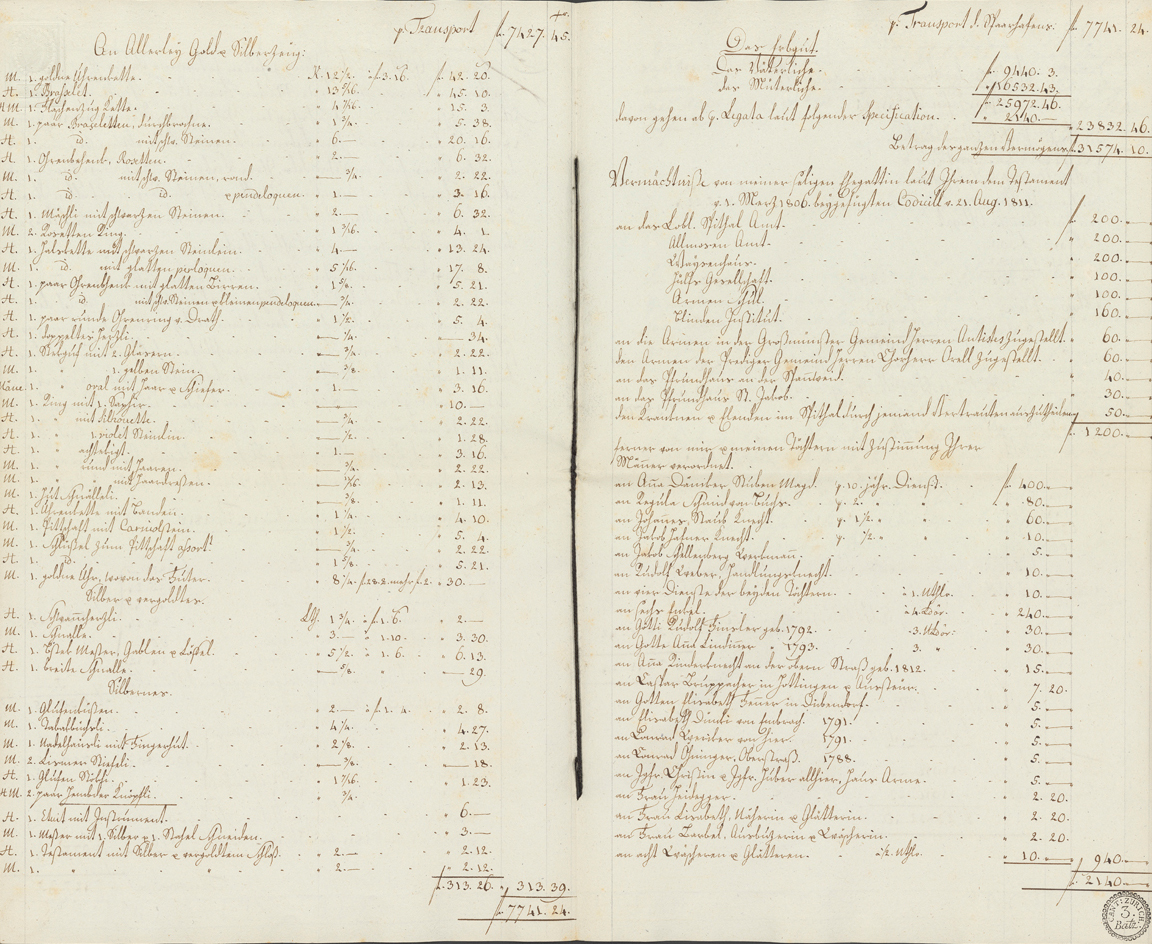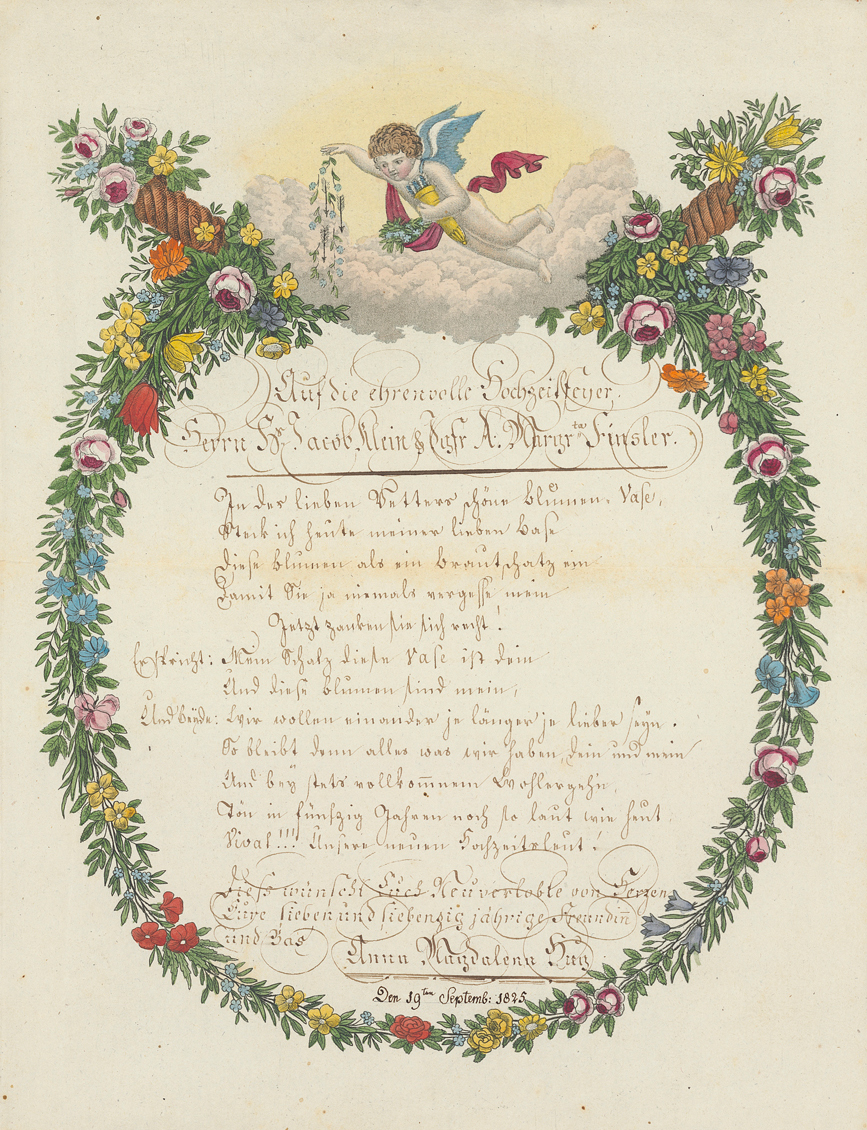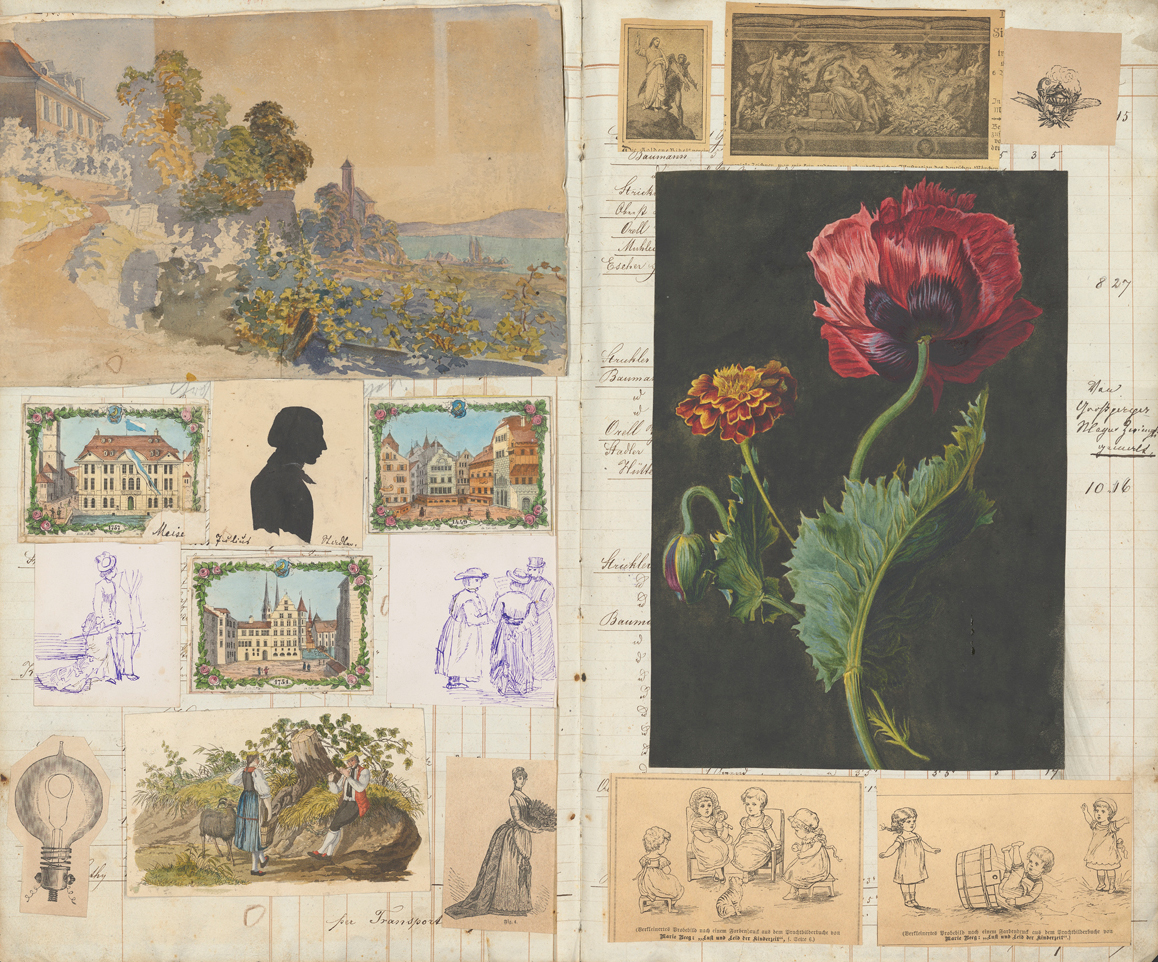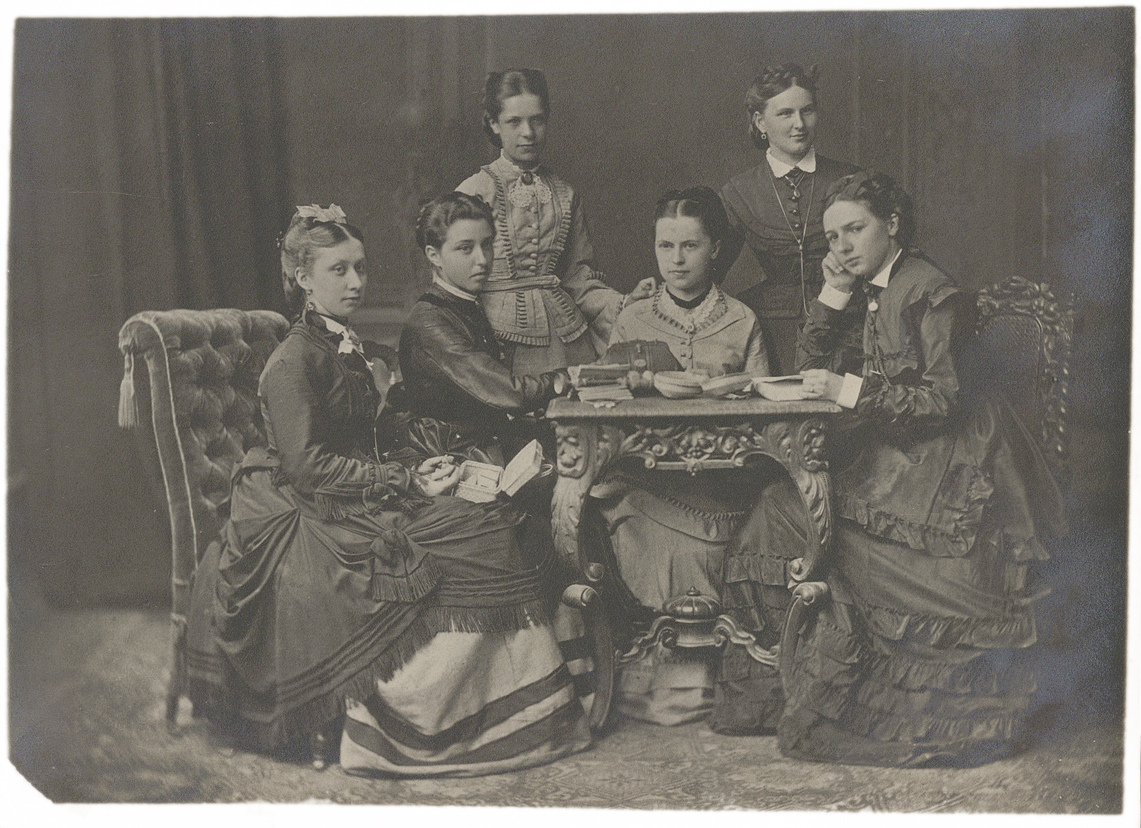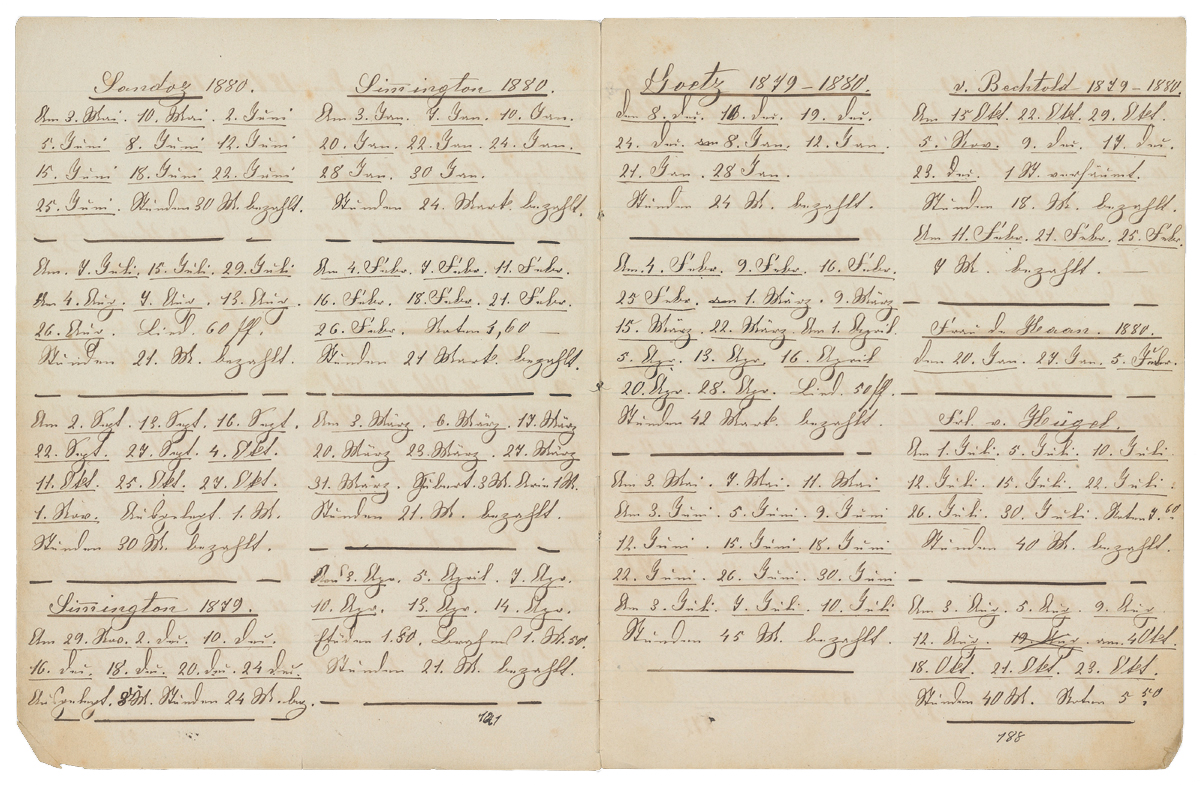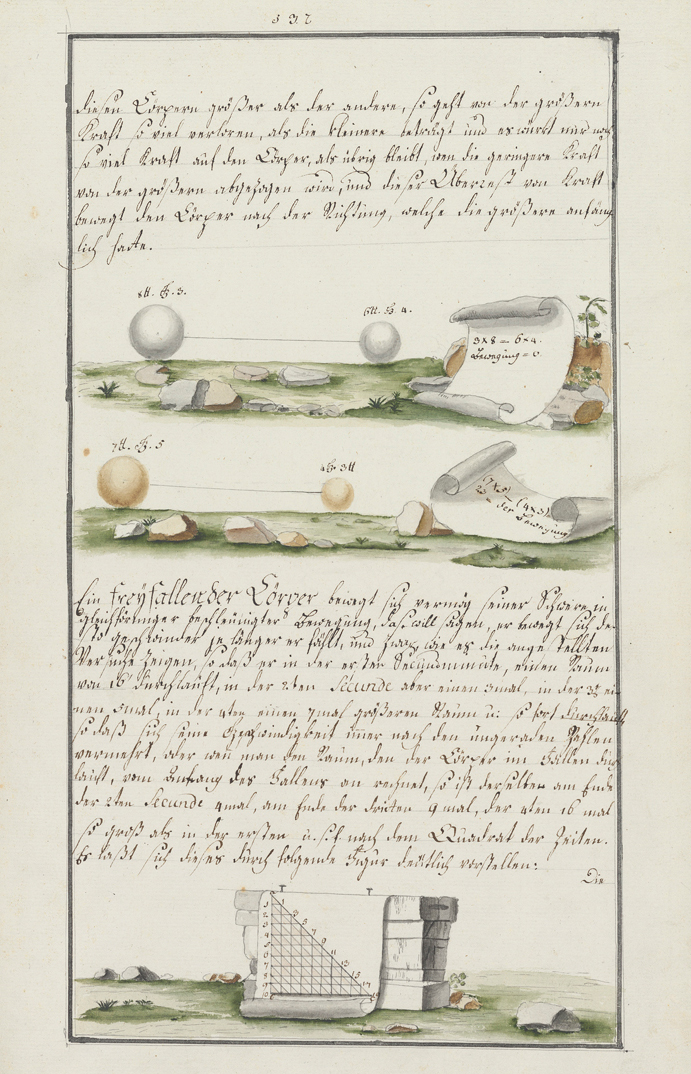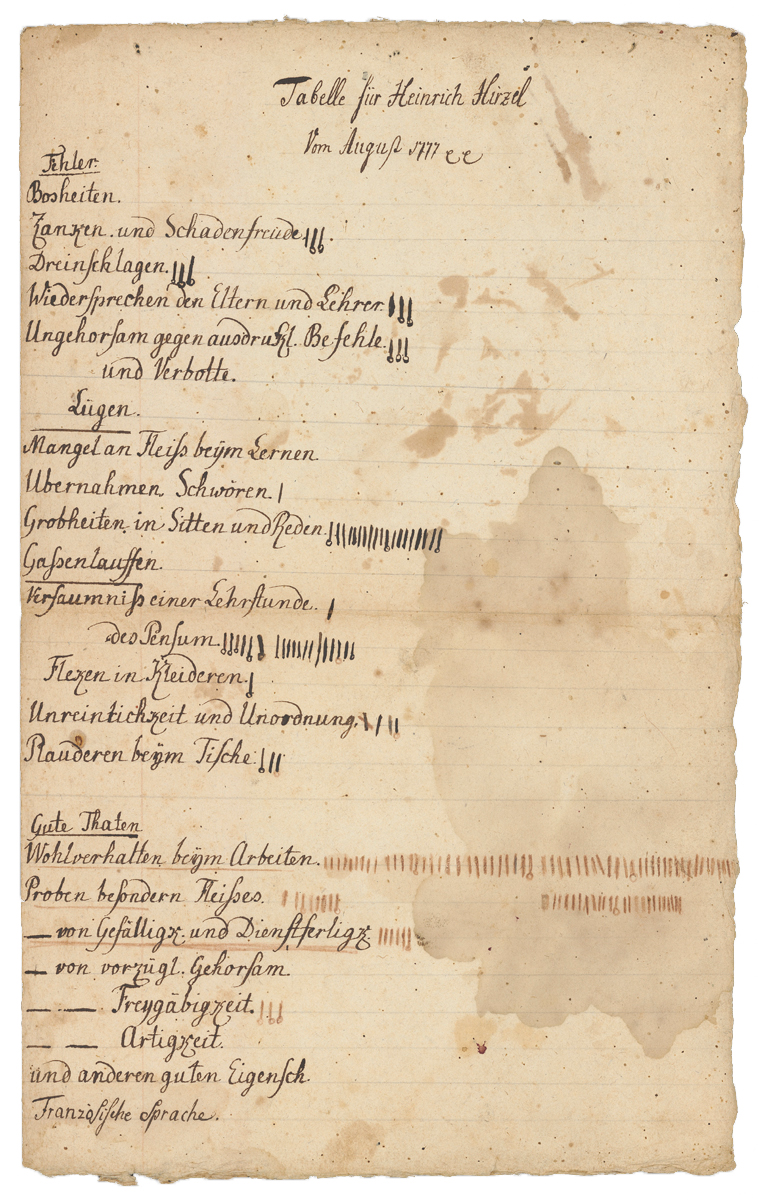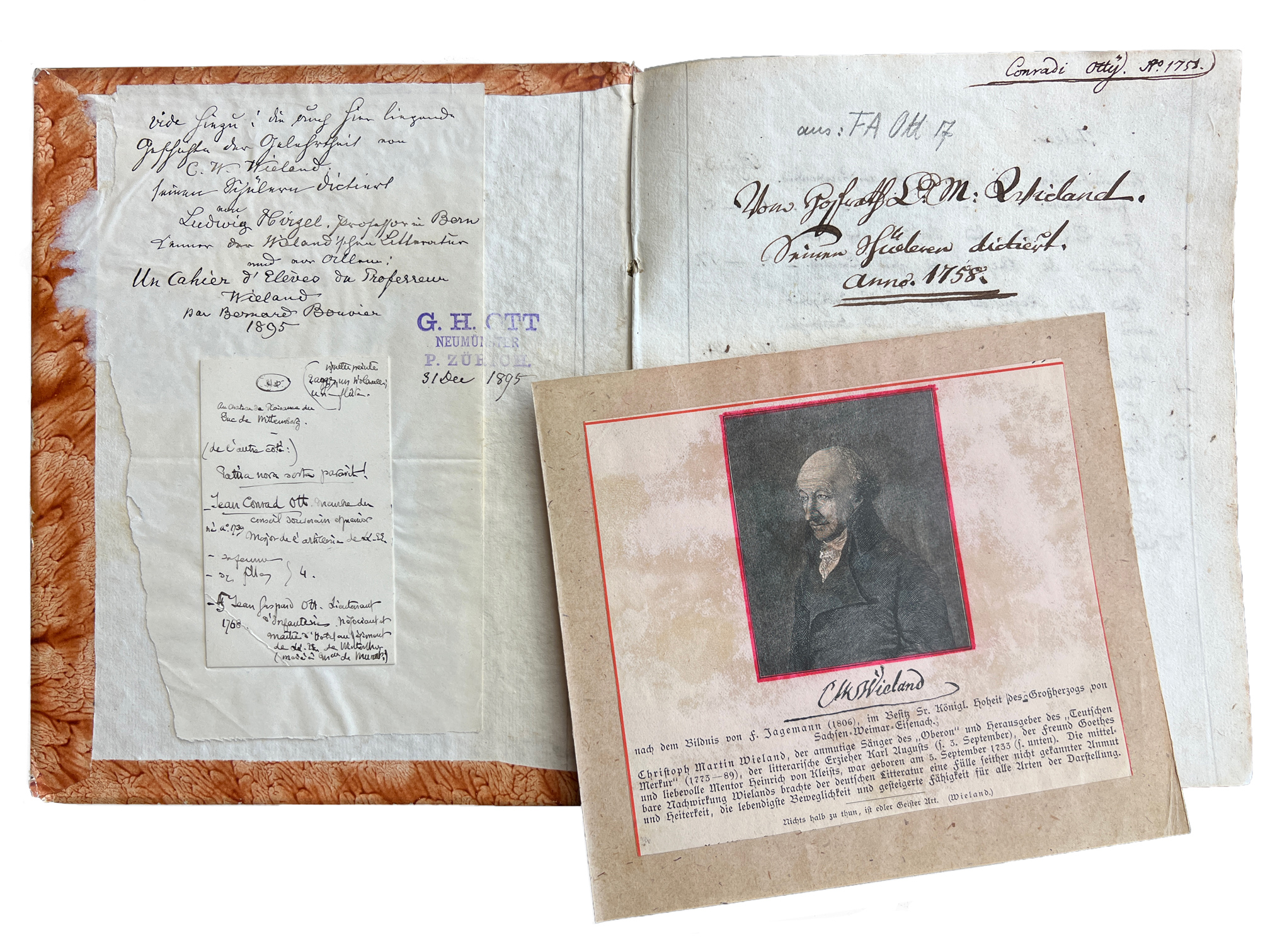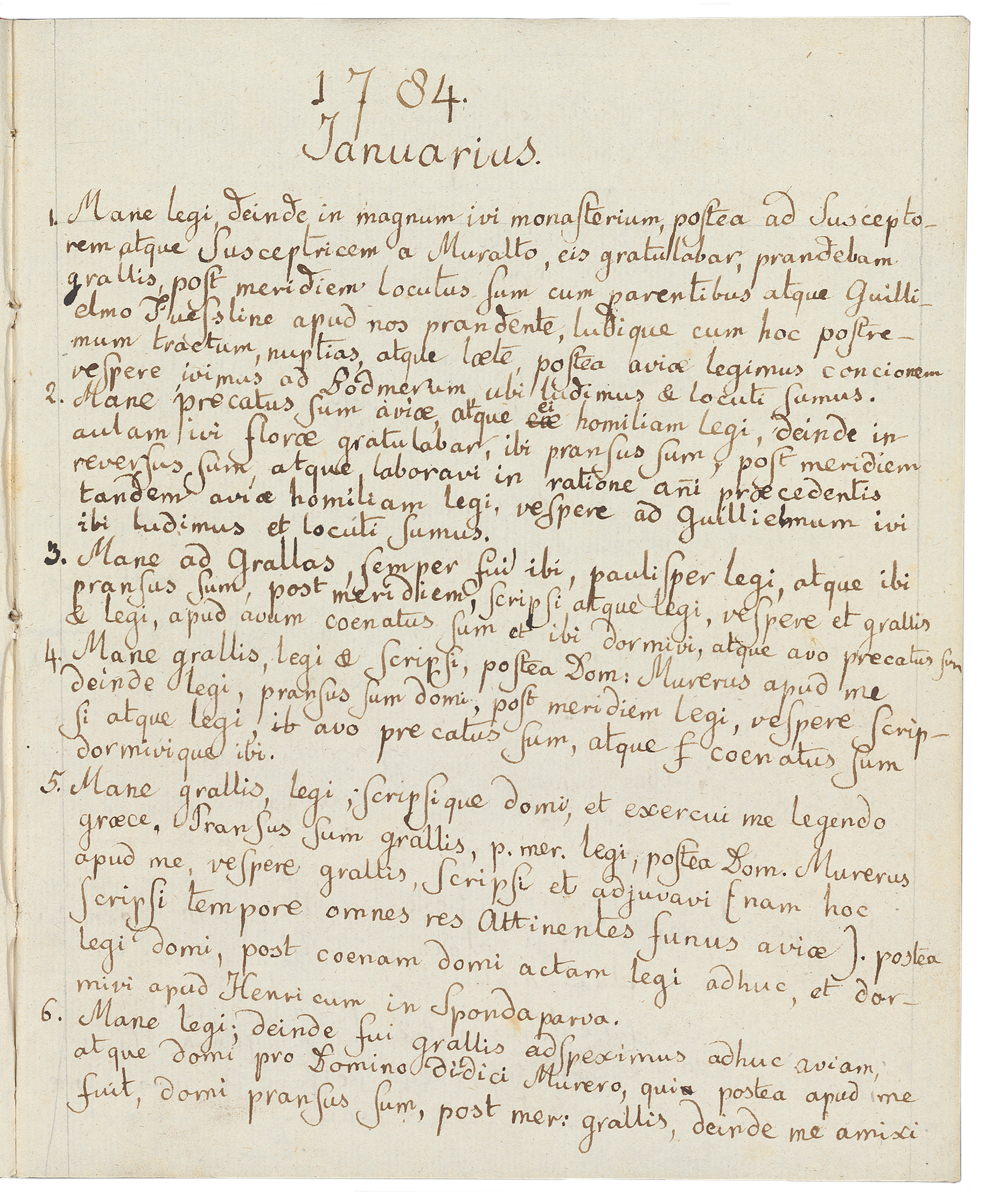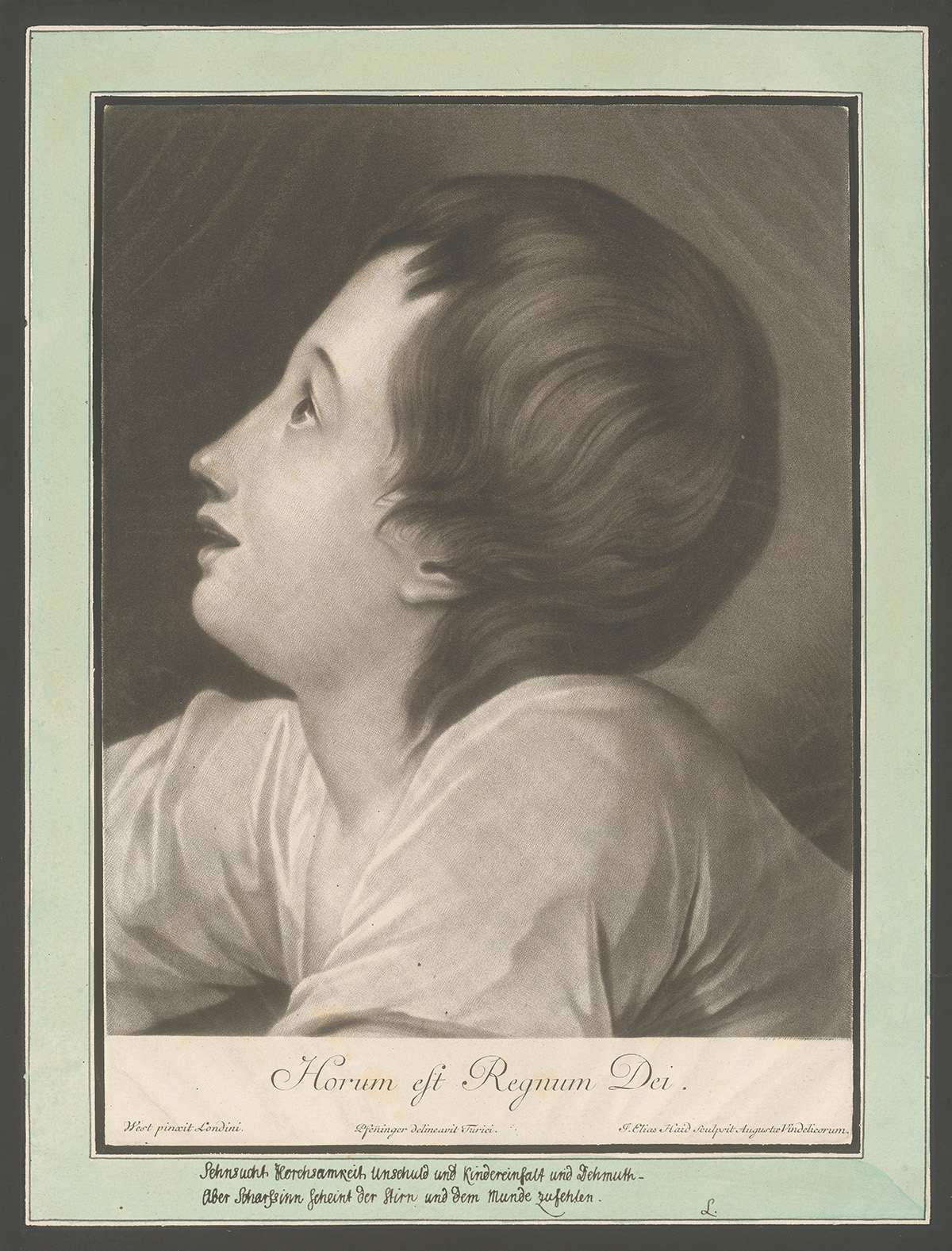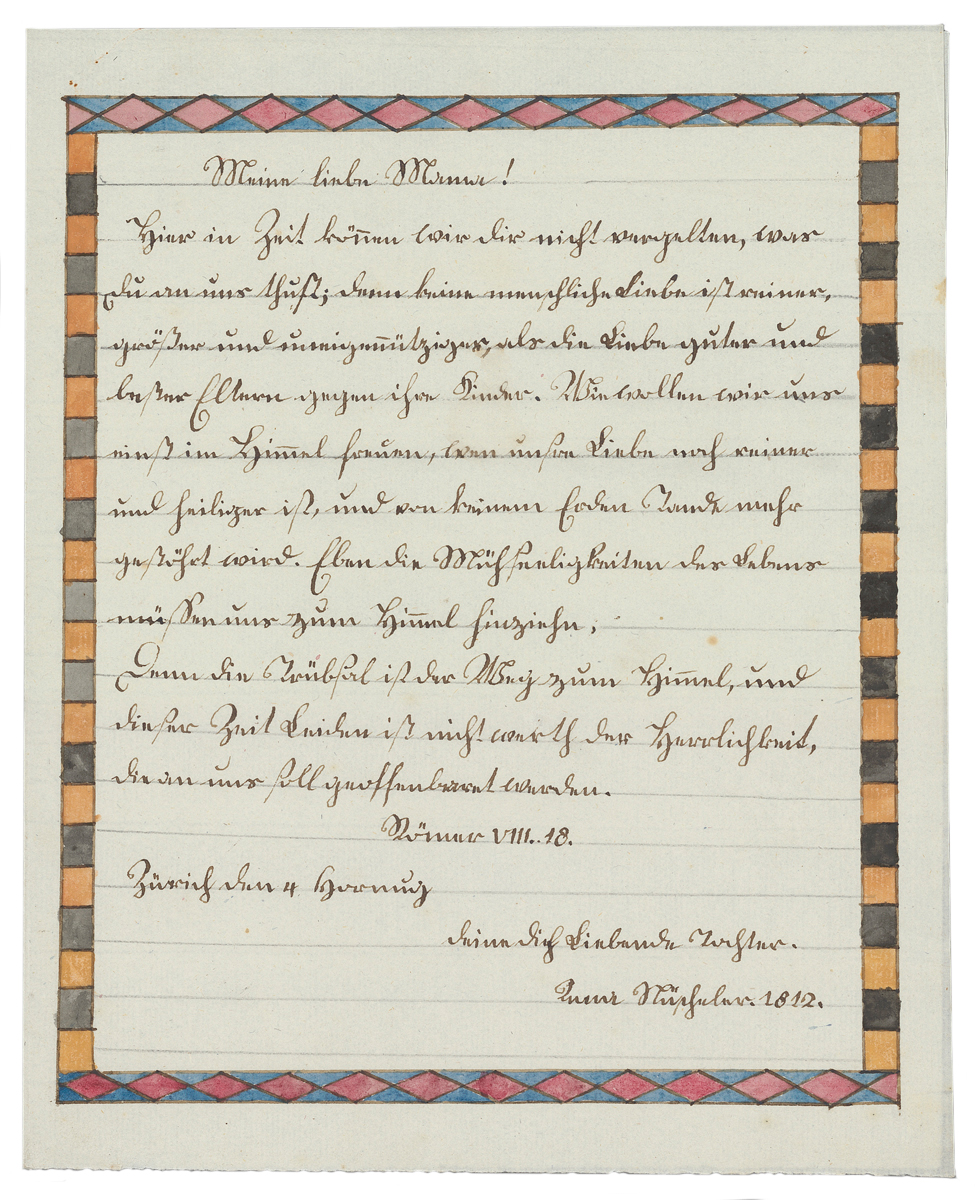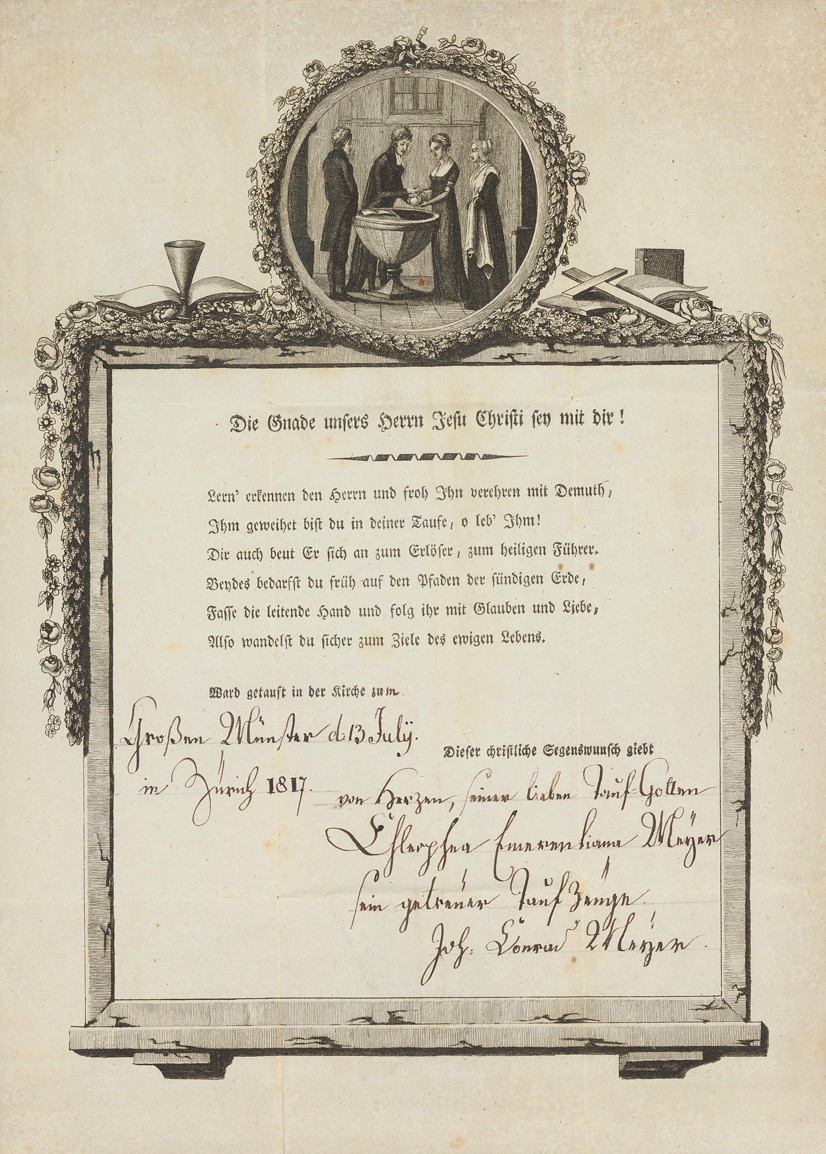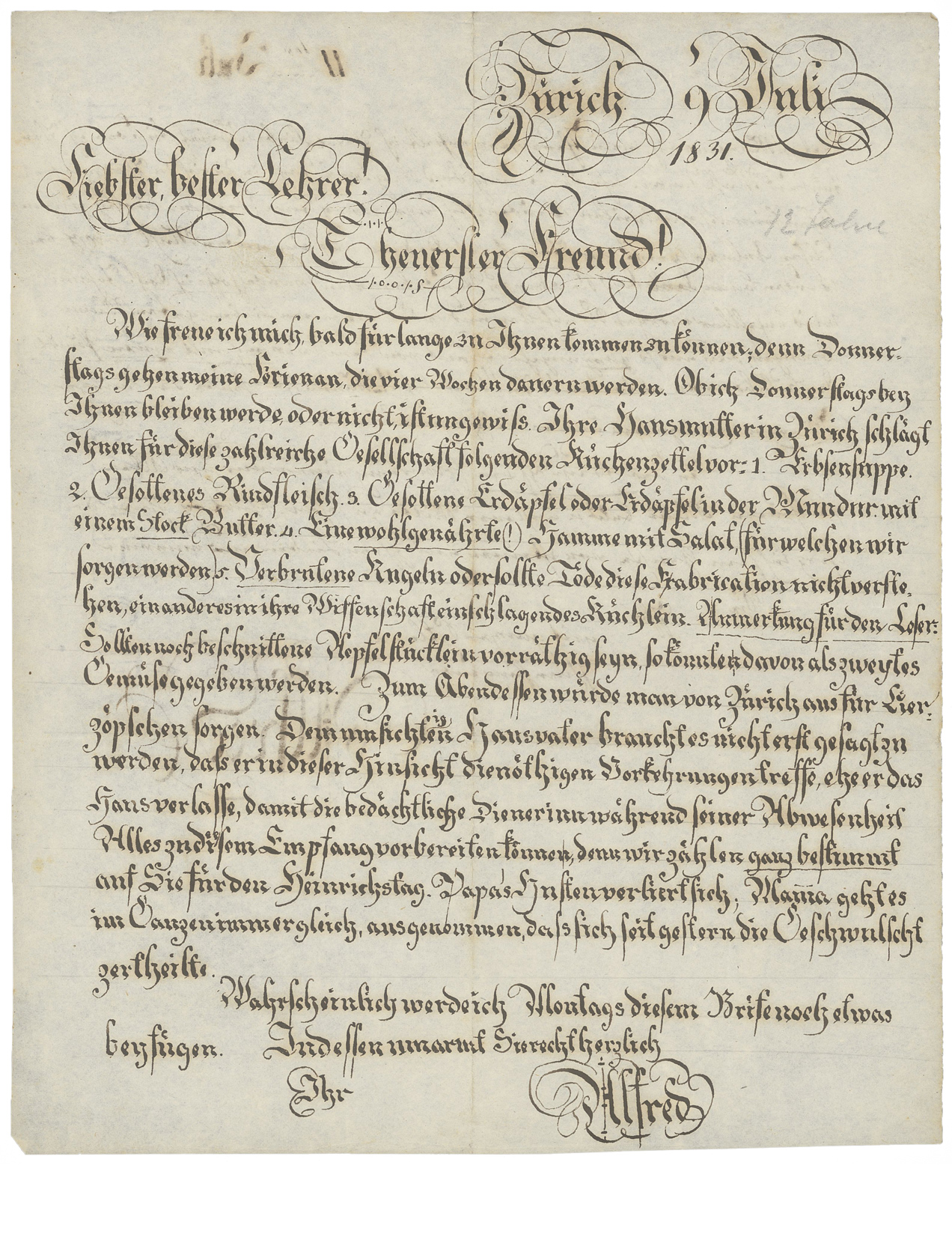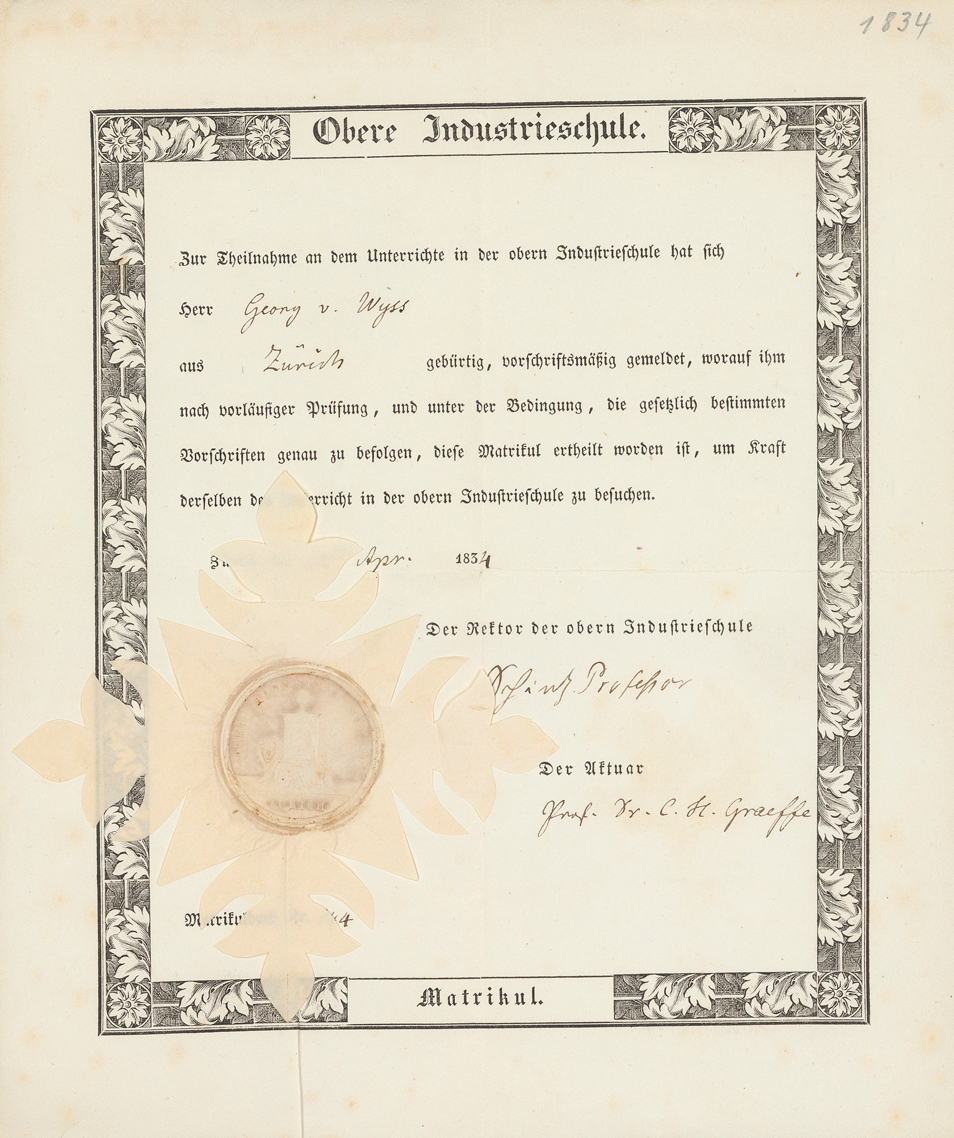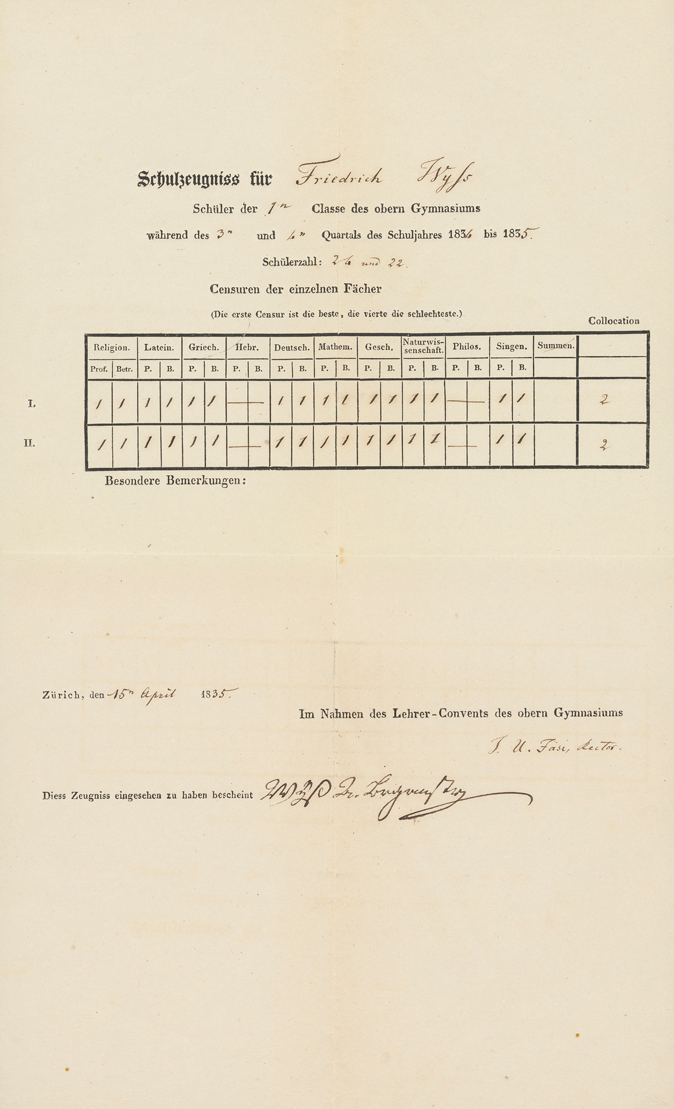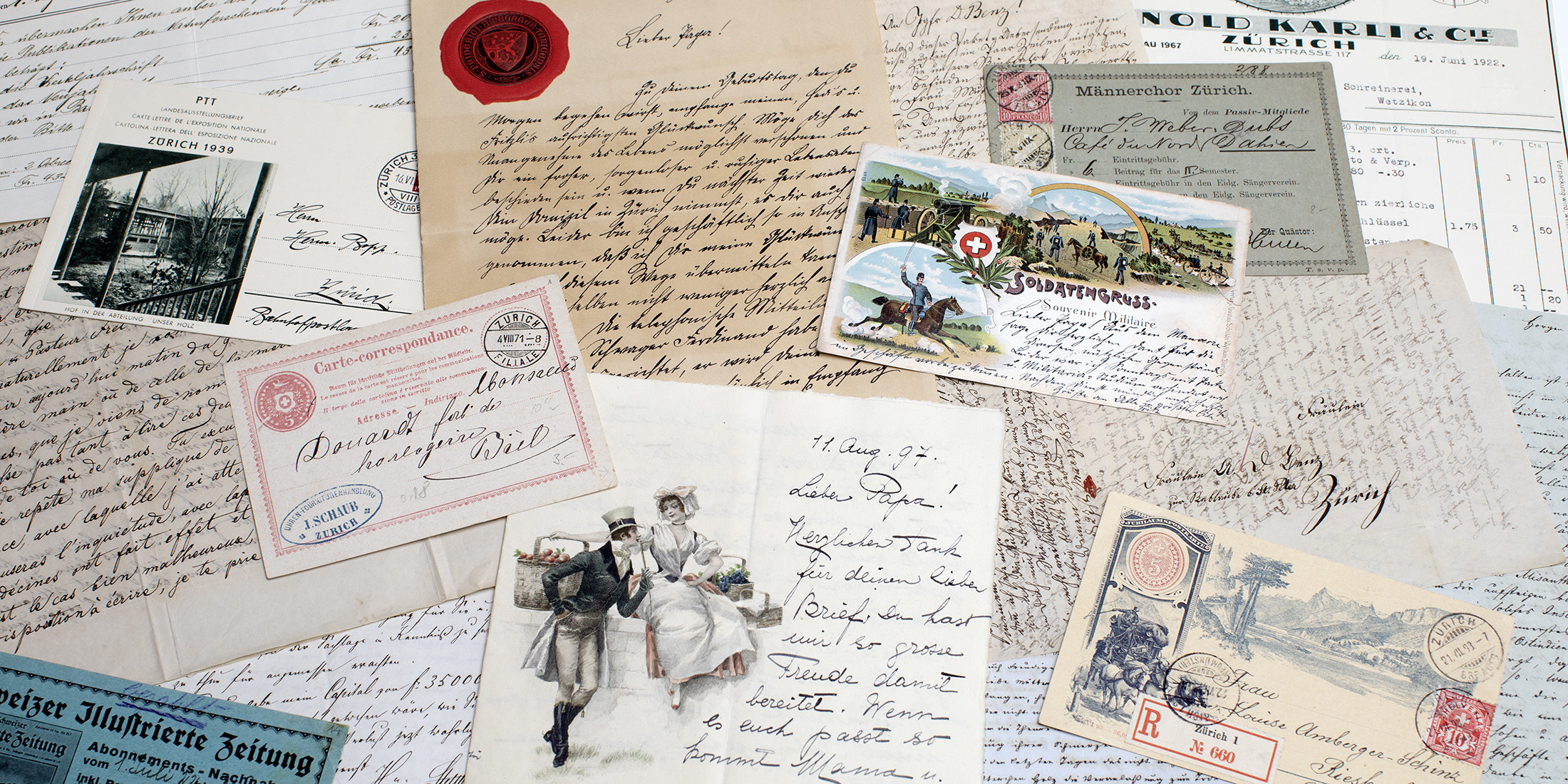
Zentralbibliothek Zürich Family Archives
Since 1900, many long-established Zurich families have given their archives to the Zurich city library, later the ZB Zürich. This was a way for them to safeguard their memory and offer those interested an insight into their history. The collections are a panopticon of Zurich society and family life.
From A for Amberger to Z for Ziegler
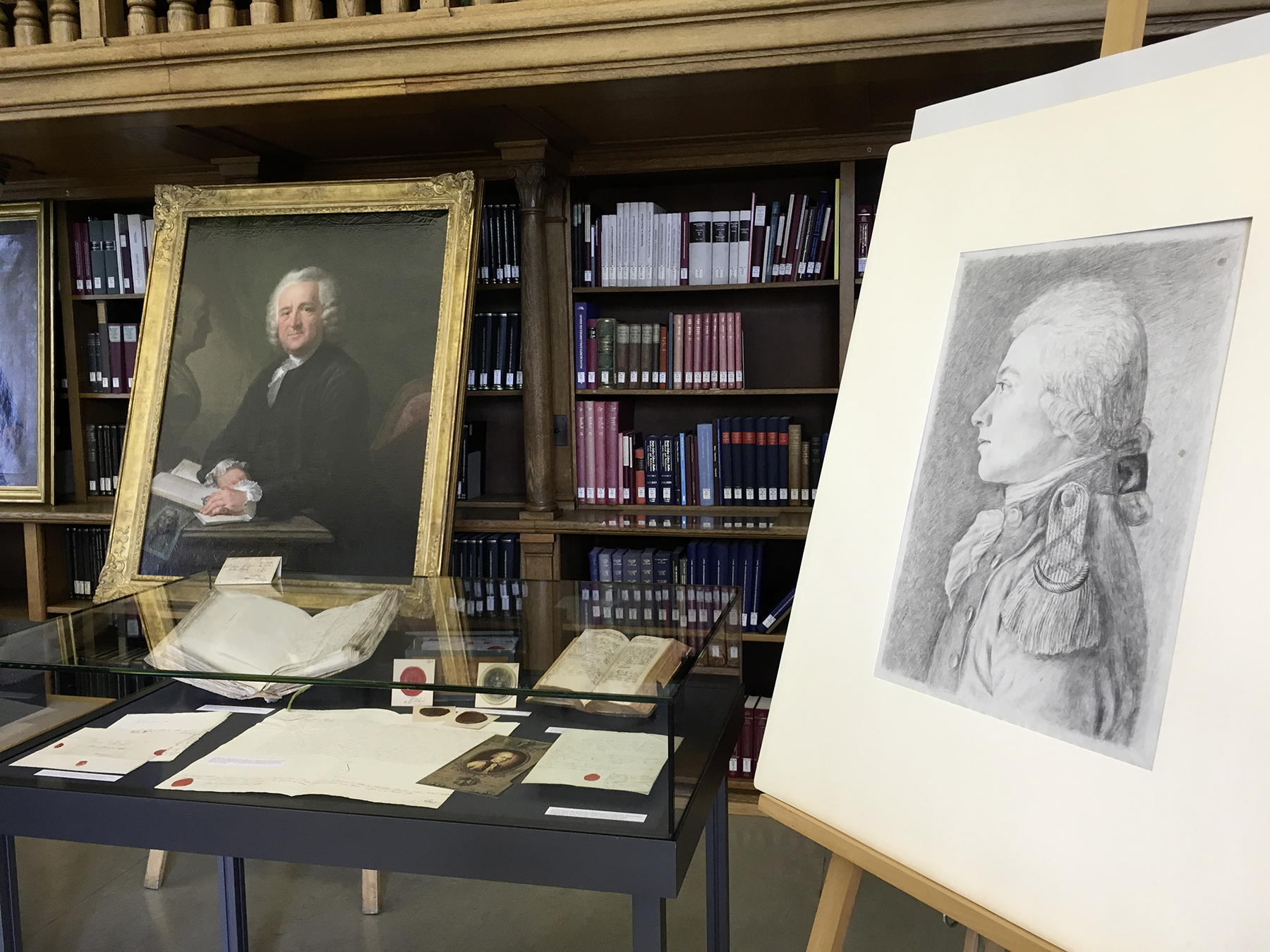
‘Many pieces that are perhaps unimportant in and of themselves become much more substantial and appealing as members of a greater whole, and valuable pieces only achieve true significance in the wider context.’
Hermann Escher, First Librarian of the city library and subsequently director of the ZB, making an appeal for the family archives collection, 1900
The Zurich family archives constitute a major collection in Zentralbibliothek Zürich’s Manuscripts department. Following an appeal launched by former school president Dr Paul Hirzel, the first collections arrived at what was then the city library in November 1900: Hirzel, Escher vom Glas, Lavater, Ziegler, von Wyss, Ott, Bluntschli …
The archives were intended to be stored centrally, classified, catalogued and made accessible to interested parties outside of the family in question. The city library added related existing documents to these, as in the case of the part of Johann Caspar Lavater’s estate purchased in 1850, which was added to the Lavater family archive.
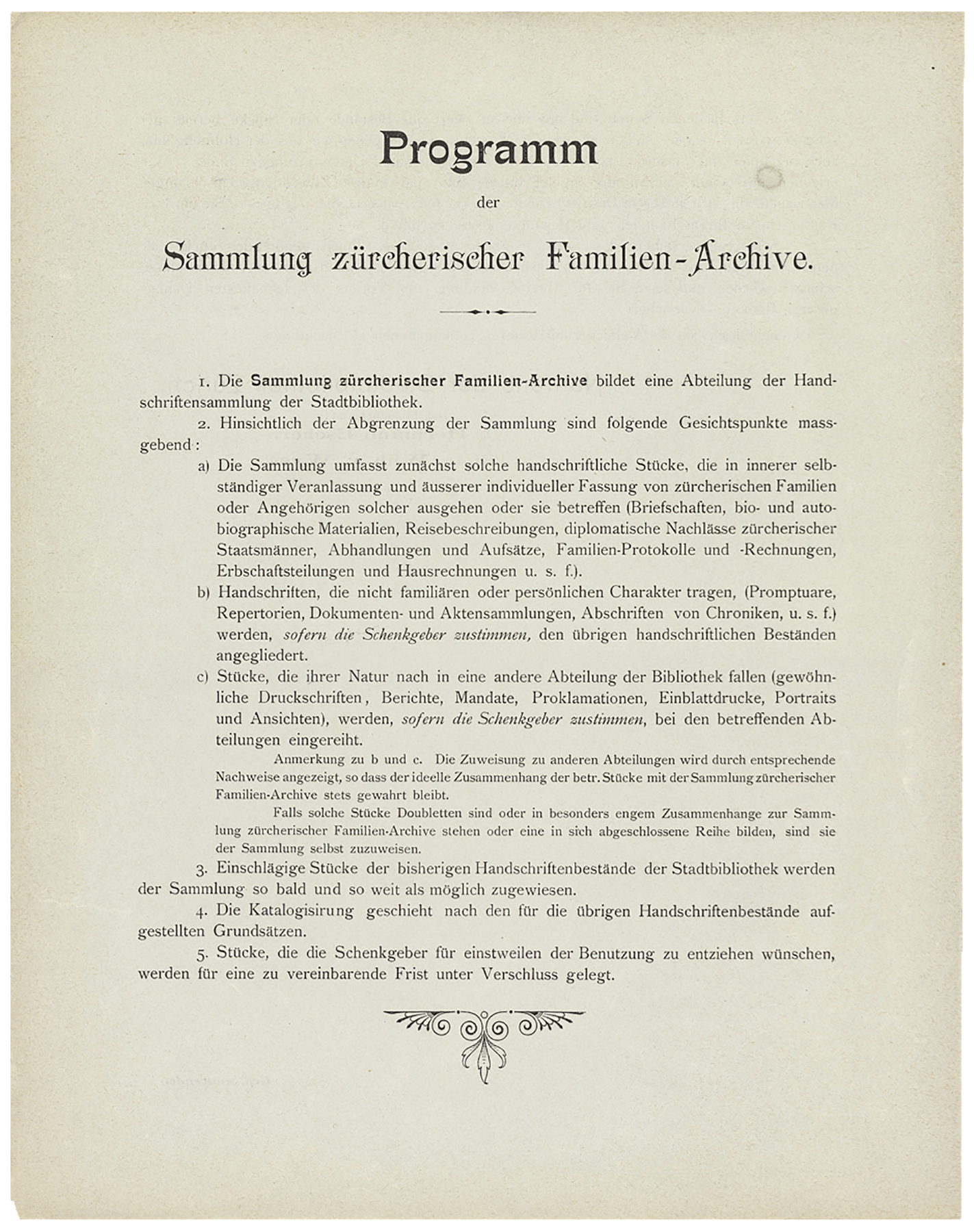
Even after the city library was succeeded by the Zentralbibliothek Zürich in 1917, other families continued to donate or lend their archives – ‘some in small quantities, some in large, and in all conceivable states of order or disorder’, as it says in the family archives catalogue from 1996. Some families are continuing to add to the archives to this day. Our archive portal currently holds 40 family archives or family history collections. They include documents dating from the 15th to the 21st centuries.
Roots and branches – family history
Most family archives are prefaced by genealogical overviews, family trees and family histories that document the branches and accomplishments of – male – members over generations. These overview elements range from slips of paper to elaborately decorated folio volumes. They all have a common purpose: to get to grips with the family at the very root of its origins and show both the branches that have thrived and those that have withered away.
Deeds, statutes, accounts, minutes and other files on the individual family foundations and funds also make up an essential component. For example, we learn which widow was looked after and who received a grant. The memory of individual members lives on in the collected obituaries, memoirs and portraits.
A wealth of subject matter
It wasn’t just paper documents that made their way into family archives – and, in turn, to the ZB Zürich. Objects did, too: collections of seals, coins and medals, copper plates for portrait etchings and even walking sticks and death masks.
Each family archive has its own individual character and highlights. Together, they constitute an invaluable panopticon of Zurich’s history through to the present day. Those interested will find biographical, family history, political, economic, social history, military history and linguistic information that goes beyond the Zurich area. Here, we provide a brief presentation of ten topics and archive materials from the wide range available.

Who’s who of the Zurich ruling class
The family archives document the history of Zurich as a city of guilds, its high society and its class system. The handwritten regiment books describe the role of the old Zurich families capable of forming regiments as pillars of the city and state – and how they saw themselves at the time. These mostly hefty tomes list all office holders, dignitaries and guild members to date and document the history of who held power in Zurich.
There is a great deal of awareness of status and tradition in the regiment books. As a ‘shop window’ for the ruling class, many are enhanced with hand drawings, copper portraits and broadsheets.
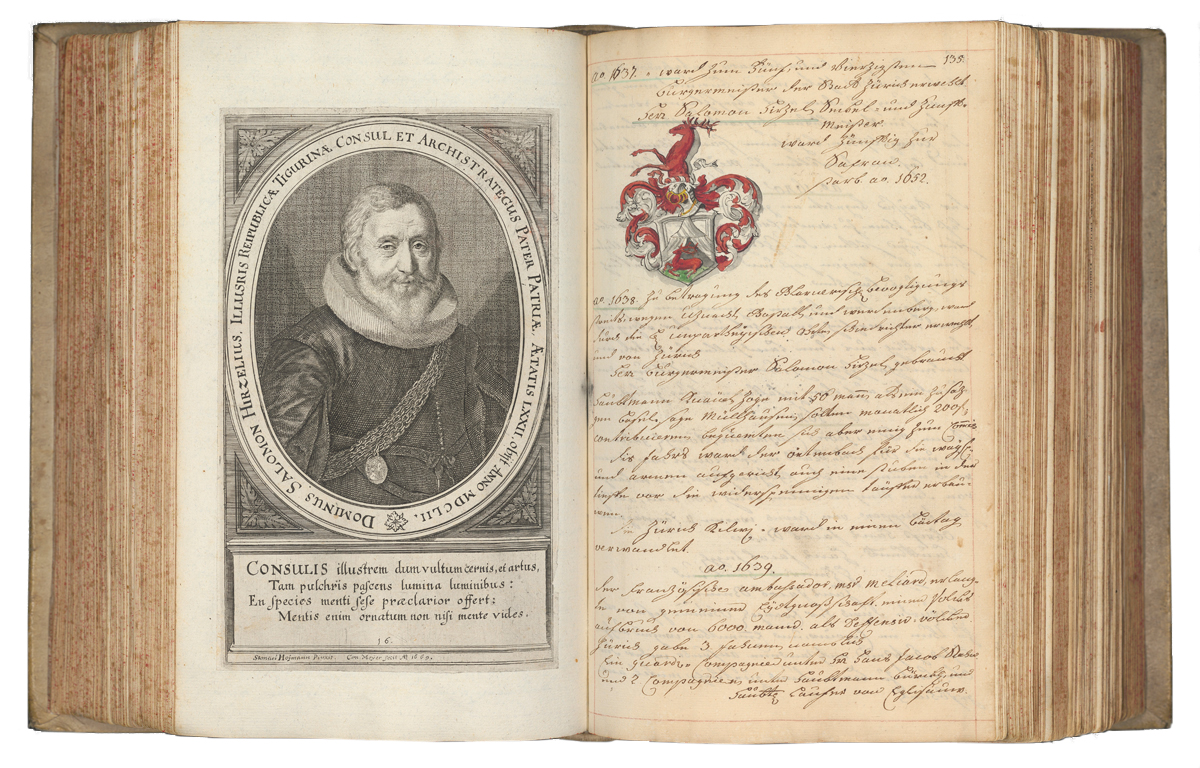

On the way up
Certificates and diplomas show how some members and entire branches of families climbed the social and professional ladder: Master craftsman’s diplomas and doctoral degrees, honorary memberships and citizenship letters, military brevets and – at the top of the list – nobility patents.
Our illustration shows the enhanced coat of arms that knight Hans Werner Escher von Binningen was allowed to use from 1635 by authorisation of the Emperor. Hans Rudolf Werdmüller’s application for the status of imperial baron was also successful in 1790. The Werdmüller family archive also includes receipts for fees paid to the amount of 3,200 guilders.
No less important was a document from the abbot and chapter of Einsiedeln, which recorded in 1508 that Jakob Wirz was released from serfdom.
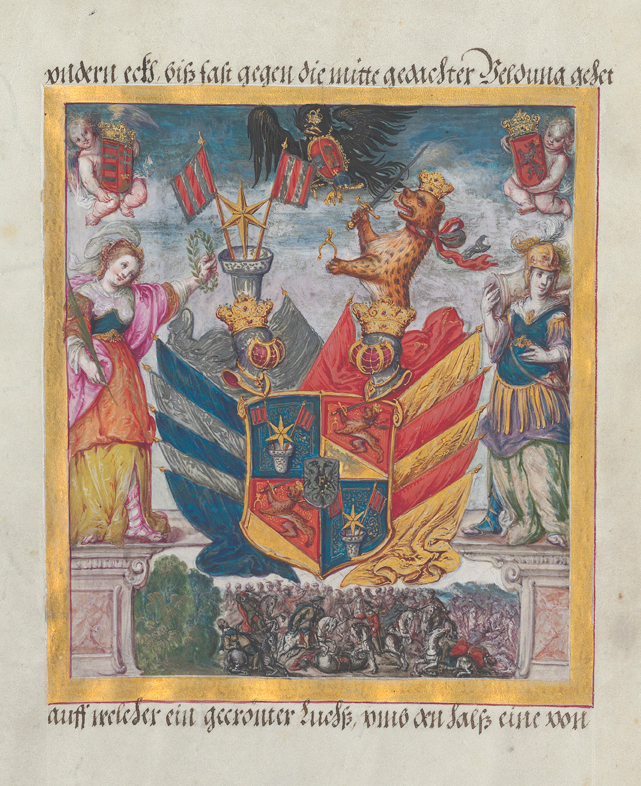
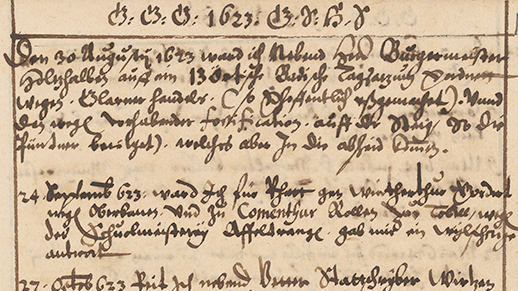
Zurich mayors and politicians
Zurich’s politicians left behind their memoirs, instructions and journals. Mention is made of diaries by mayors Salomon Hirzel, Hans Kaspar Hirzel and Hans von Reinhard, as well as lawyer Johann Caspar Bluntschli. In 1898, politician Eugen Melchior Escher, editor-in-chief of the NZZ newspaper and director of the Nordostbahn railway, looked back on ‘peaceful and lively times’.
The Wyss family archive includes the estates of three mayors from the Escher family. Away from the day-to-day goings-on in the world of politics, we find out things like how much the funeral of Hans Kaspar Escher in 1696 cost, the dowry acquired by Hans Jakob Escher on his first marriage in 1677, and the weather conditions Hans Kaspar Escher experienced in the period 1702-1740.
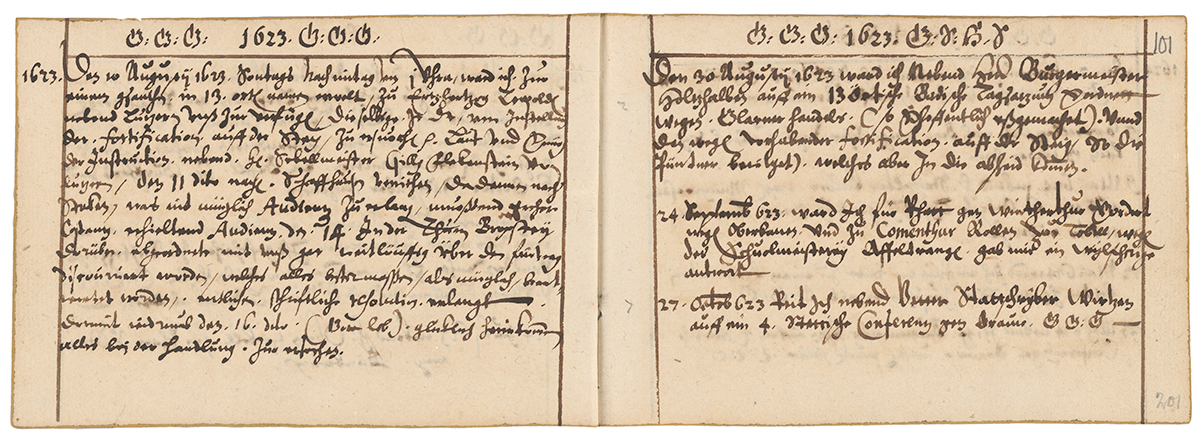
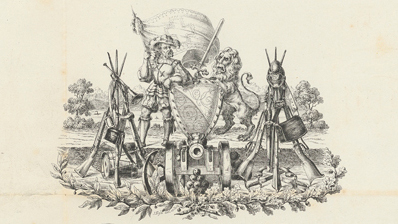
For fatherland and foreign masters
For generations, Zurich residents served their homeland and foreign masters as soldiers, captains and generals. Military brevets, regiment lists, order books, reports and letters provide information about their operations and experiences.
In around 1700, the officer Hans Konrad Werdmüller documented his service in northern Italy and as the city commander of Lindau. A century later, colonels Jakob Christoph Ziegler and Eduard Ziegler recorded their assignments in federal and foreign services. The last news of the soldier Konrad Wirz, who was taken prisoner by the English during the Spanish campaign in 1809, fell ill and died, is kept in the Wirz family archive.
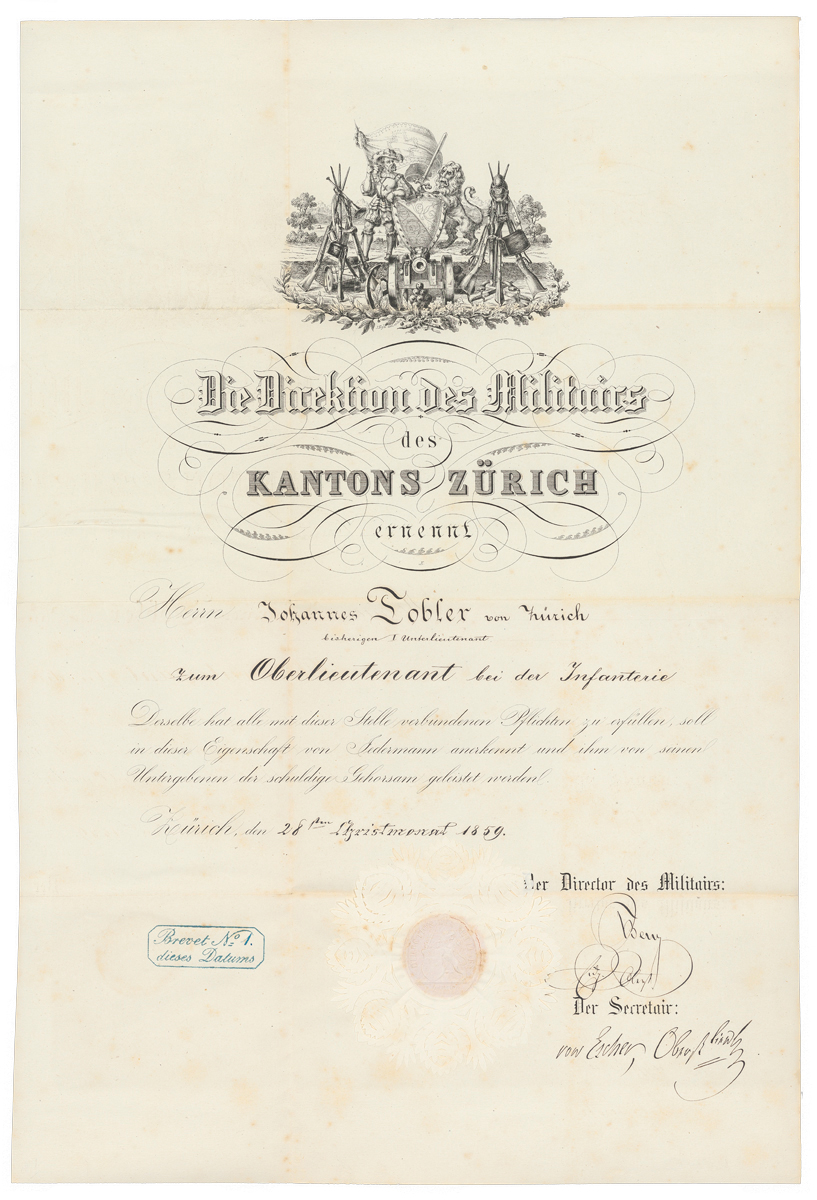
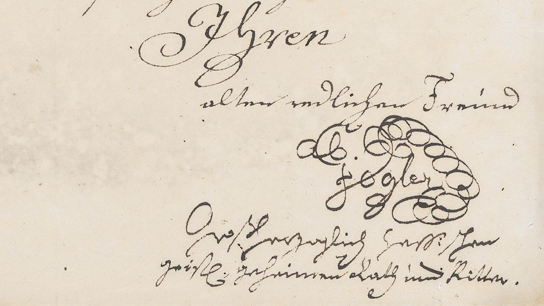
Correspondence
The thousands of letters in the family archives show the connections between Zurich families and with the wider world. They are a valuable source of the history of ideas – for example, the extensive correspondence of the city doctor Hans Caspar Hirzel, the pastor Johann Caspar Lavater, the natural scientist Hans Bluntschli, the historian Georg von Wyss and the art historian Johann Rudolf Rahn. The many letters from women are worthy of special mention: daughters wrote to their parents, mothers to their sons, brides to their betrothed.
Alongside originals that made their way to the family, there are copies of letters recording what was written to others. Entries in friendship books and letters of recommendation, resignation and dismissal were also kept.
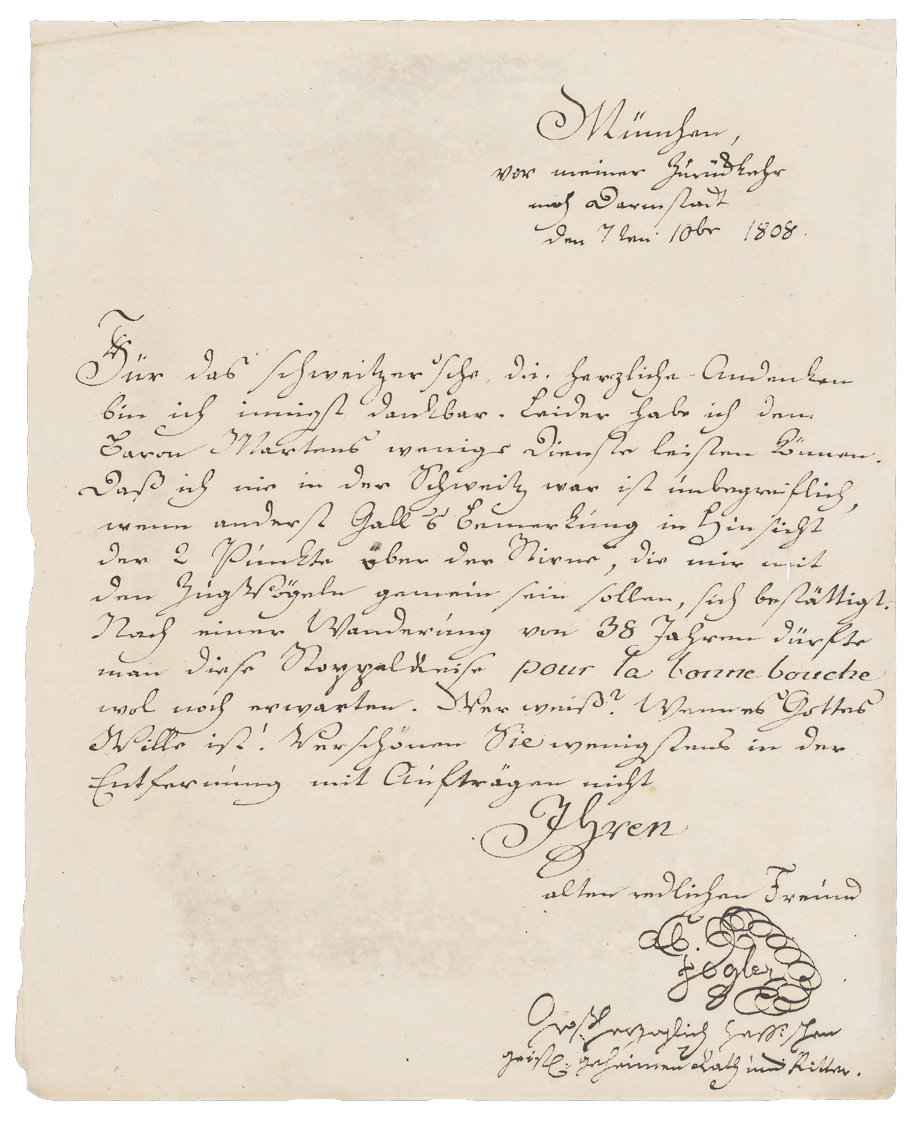
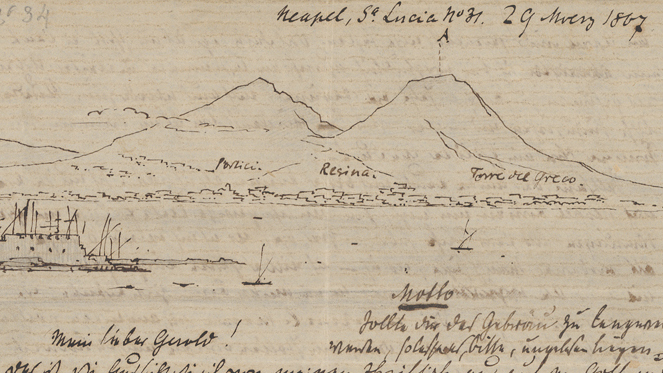
Travelogues
Wanderlust, business, military and diplomatic service, or crises sent Zurich’s citizens all over the world. They described their experiences themselves. For instance, architecture took Alfred Friedrich Bluntschli to San Francisco in 1898, while zoological research was the reason his son Hans Bluntschli travelled to the Amazon and Madagascar. Businessman Adrian Corrodi moved to Persia (now Iran) and India after the turn of the century. Leonhard Ziegler became a plantation owner in East India in 1815, while Jakob Christoph Ziegler became a colonial officer in Sumatra in 1822. Some travelogues in the family archives are informative sources on Zurich’s colonial past.
Why disappear to faraway lands? Other people from Zurich recorded their walking trips in Switzerland – for example, a class trip lasting several days to Kyburg, Winterthur and Schaffhausen in 1789, during which they were received by the bailiff.
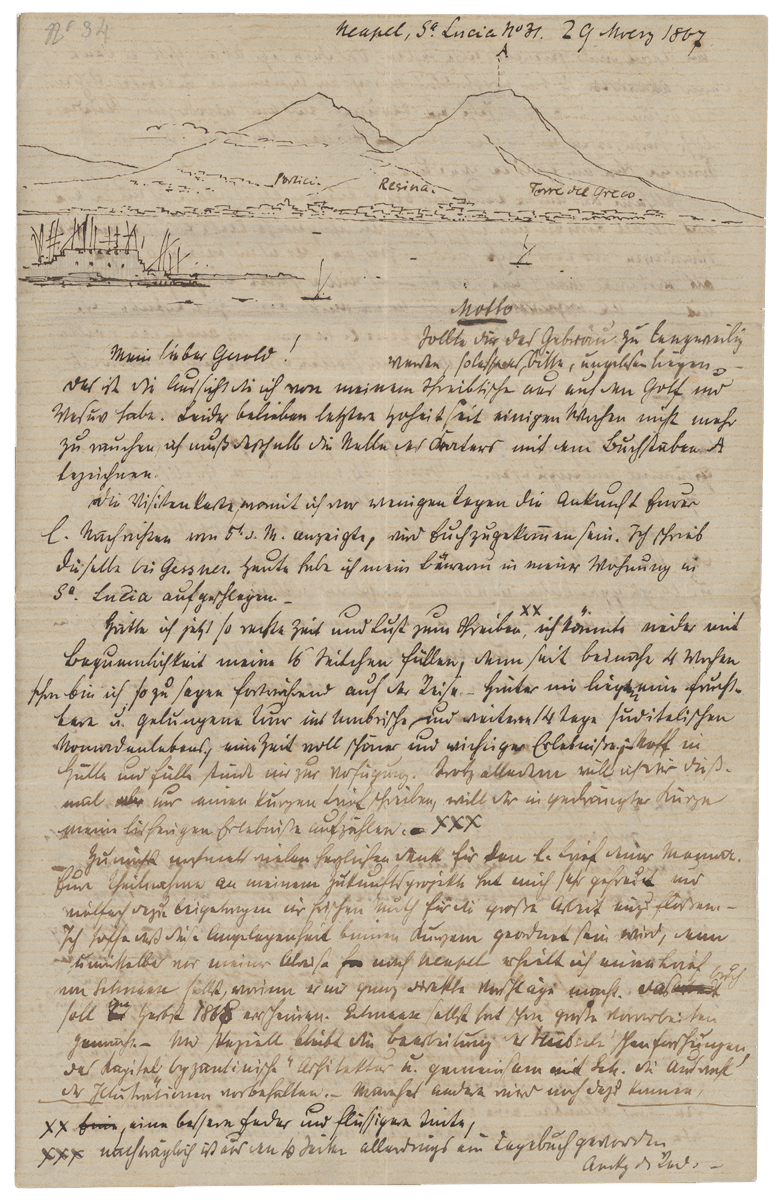
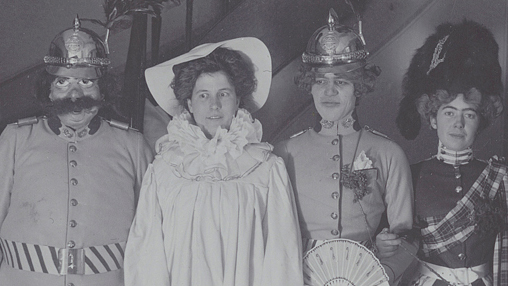
Customs and festivities
From the cradle to the altar to the final resting place: documents and images feature prominently in our lives and mark important milestones. The wide range of documents also shows how customschange. For instance, baptism and church certificates are no longer issued by Zurich churches.
The family archives contain memories of festivities and celebrations. Colourful cotillion decorations from dance events and photos of balls can be found in the Ganz family archive. The Hirzel family archive also includes invitations, programmes and poems from family festivities. Wedding records have their own particular charm, with invitations, gift lists, menus, messages of congratulation and information on costs. The Ott family archive even includes a seating plan.
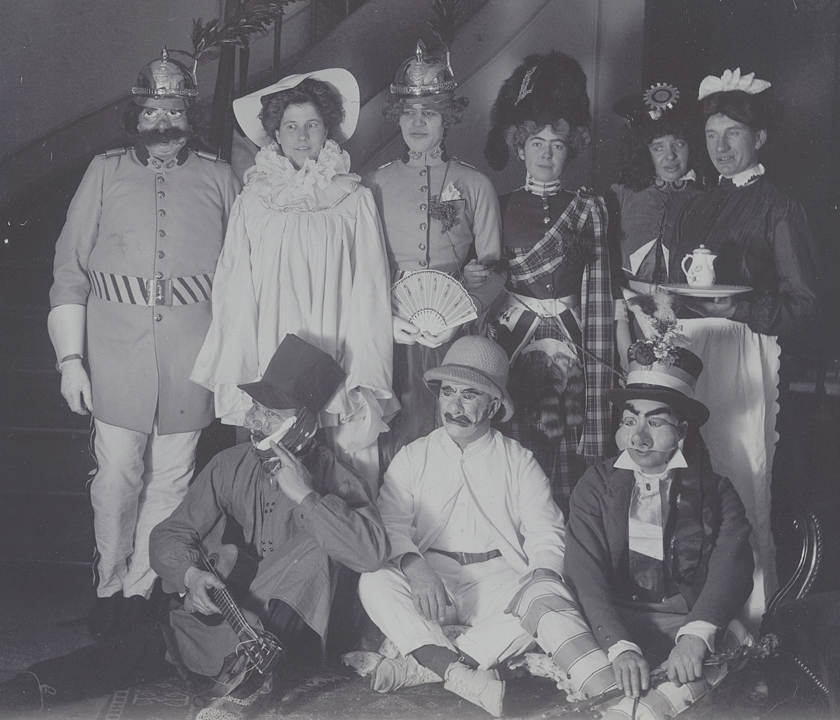
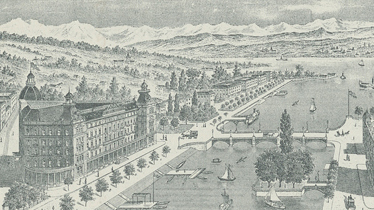
The business world
The family archives also include documents on trade, industry and commerce – where a handshake alone wasn’t enough: trade apprenticeship letters, correspondence, purchase and promissory notes, hotel bills, business books, files on company foundations and liquidations, price lists and advertising. Alongside Zurich, Great Britain and the Dutch colonies also played a key role.
The Werdmüller family archive features Zurich business records from the years 1598 to 1854, including the oldest existing ledger of a Zurich company and, at the same time, the oldest evidence of double-entry bookkeeping in Zurich. Women got in on the act, too: we find receipts for business deposits from Anna Elisabetha Werdmüller-Gossweiler and Ursula Werdmüller-Hofmeister from the 18th century.
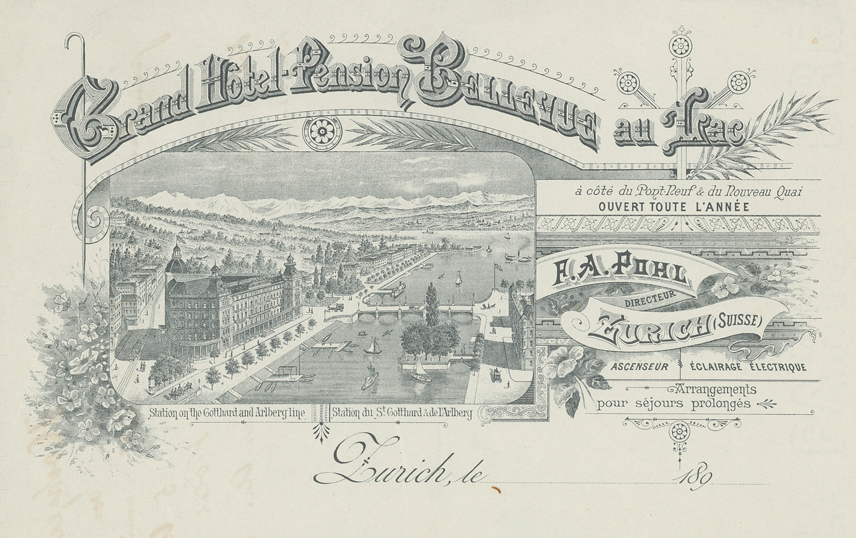
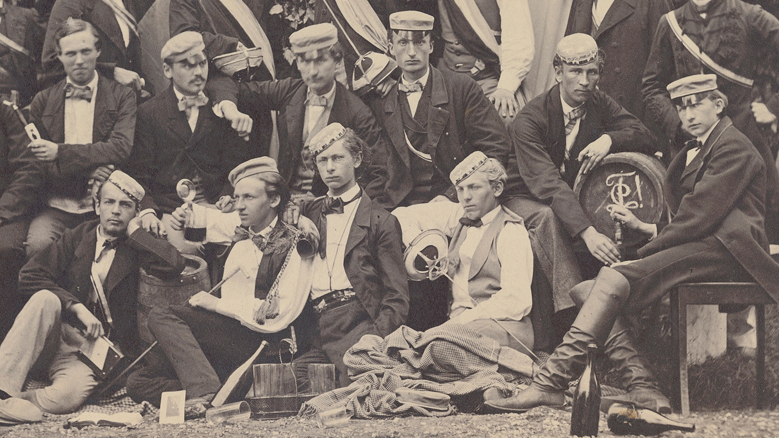
Guilds and associations
The family archives tell the story of guilds and associations and their members’ various political, cultural, professional and charitable networks. Voting documents, invitations, appeals, collection campaigns, lists of members, speeches and obituaries were kept.
The detailed family archives catalogue indexes, among others, the Society for the Promotion of Domestic and Moral Happiness and the Auxiliary Society in Zurich, the Freemasons, Year Group Associations, the Society of Old Zurich and the Zurich Artists’ Society. And, of course, the guilds. For dedicated association members like politician David von Wyss, historian Georg von Wyss and philologist Hans Wirz, ‘association matters’ are recorded separately.
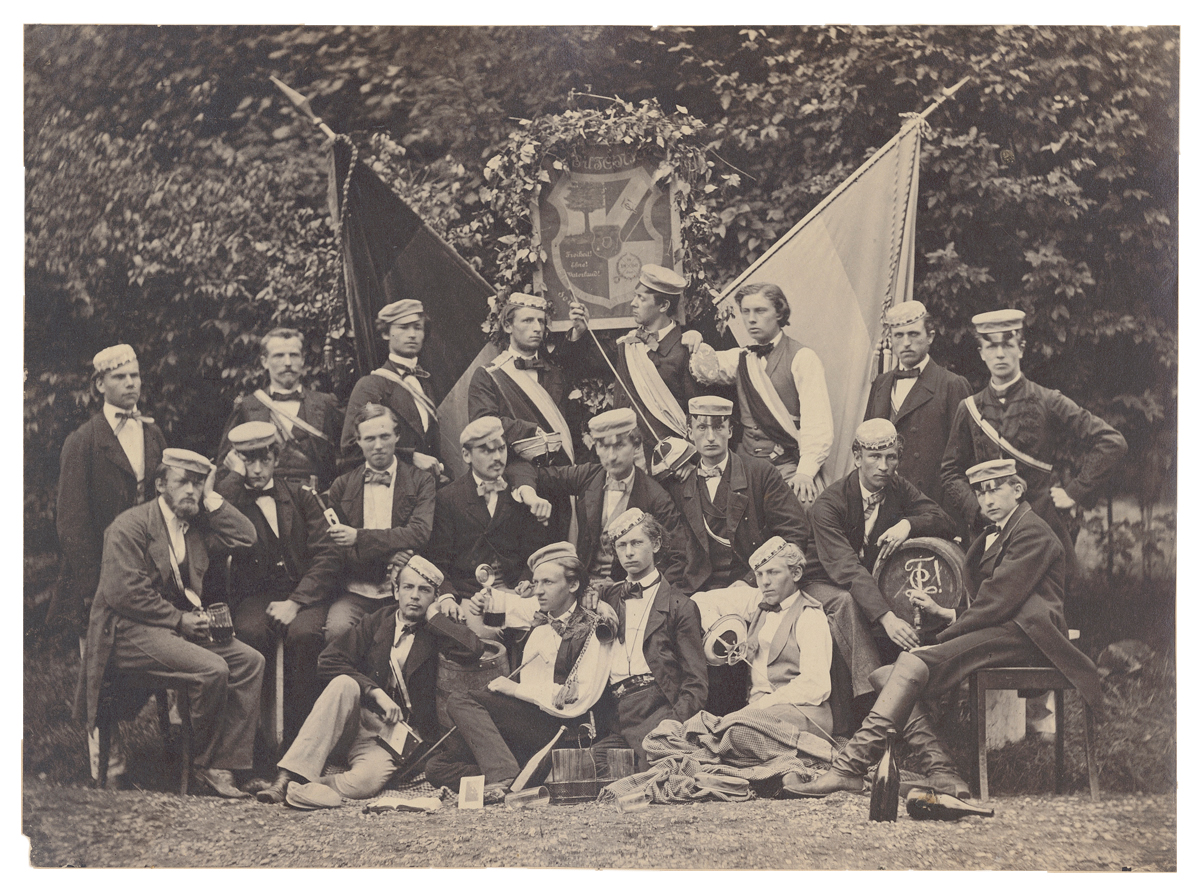
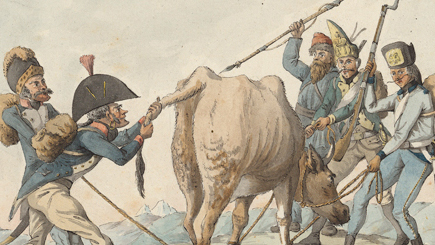
Art from the archives
From children’s drawings to mini masterpieces. The family archives also include original works of art, including sharply observed contemporary caricatures on the decline of the Ancien Régime and on Napoleon by David Hess, sketchbooks from naturalist Albert Mousson and large-scale architectural and ornamental studies.
The older works of art include illustrated entries in ‘Libri amicorum’ (friendship books) and magnificent drawings of coats of arms, as well as printed New Year’s sheets, portrait engravings and vedute.
Other images, impressive oil portraits and sculptures are held by the ZB Zürich Graphic Collection – for instance, those pertaining to the Landolt, Lavater and Ott families.
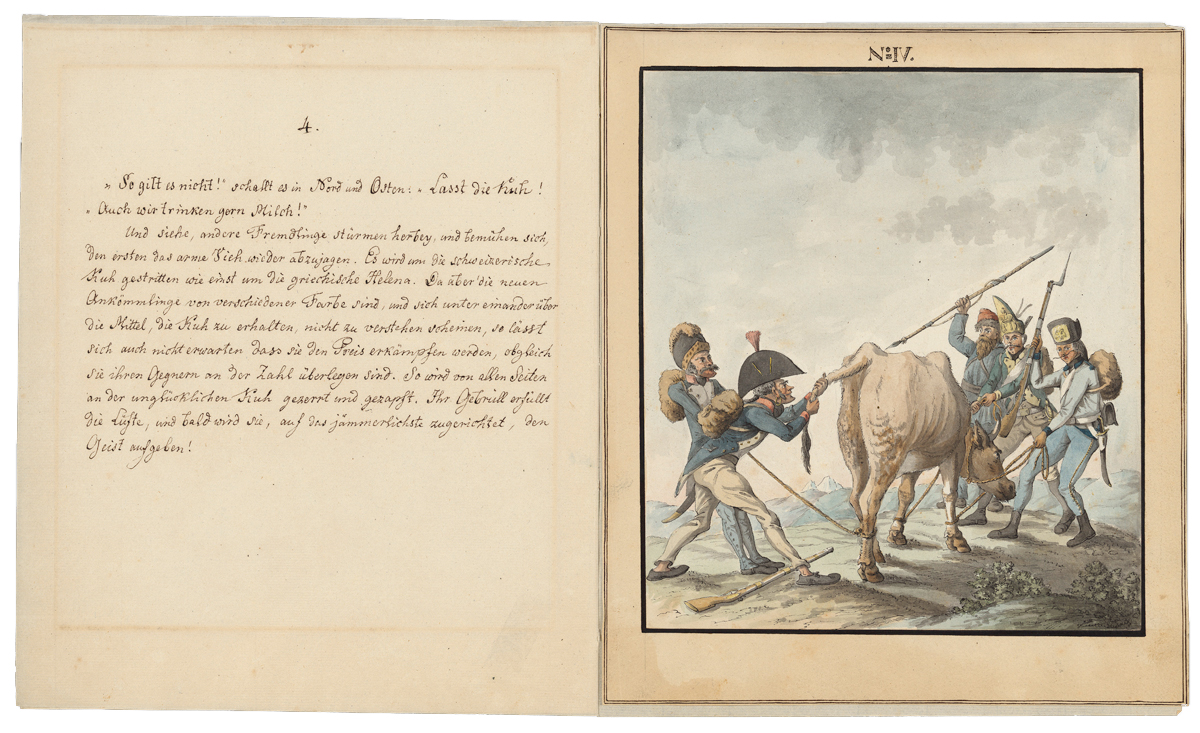
And what about women?
Documents from women are more scarce and often attached to their husbands’ or fathers’ records. Careful research will reveal bourgeois daughters and countesses, mothers and nuns, maids, teachers and businesswomen. Marriage contracts, dowry lists, expenses books, wills and inventories provide fragmentary information on the economic and family circumstances of individual women. Letters, diaries, memoirs and literary works (Nanny von Escher, Ida Hirzel-von Meiss) offer a glimpse of their thoughts and social connections.
As married women (and their children) were entered in their husbands’ family trees, the trail goes cold for many – unless they married into a Zurich family whose archive made it into the ZB Zürich collection, like Anna Tobler-Nüscheler. Families not from Zurich are also represented through marriage.
Zurich childhood(s) and education
The family archives also have plenty to offer when it comes to the cultural history of childhood and education. Letters, drawings, poems, schoolbooks, study and ‘behaviour reports’, savings books and wish lists from bourgeois children not only document individual development but also reflect the relationship between the generations.
Eighteen-year-old Georg von Wyss poured his heart out to his father in 1834 and cherished his letter in reply. Alongside a baptism certificate, proof of vaccination and confirmation sermon, in 1937, Betty Burckhardt-Finsler also left behind letters to her mother from her youth and letters from her grandmother. We also find references to lives lost early, such as the horoscope for a baby that died in its first year of life in 1666.
Dig deeper – Research aids
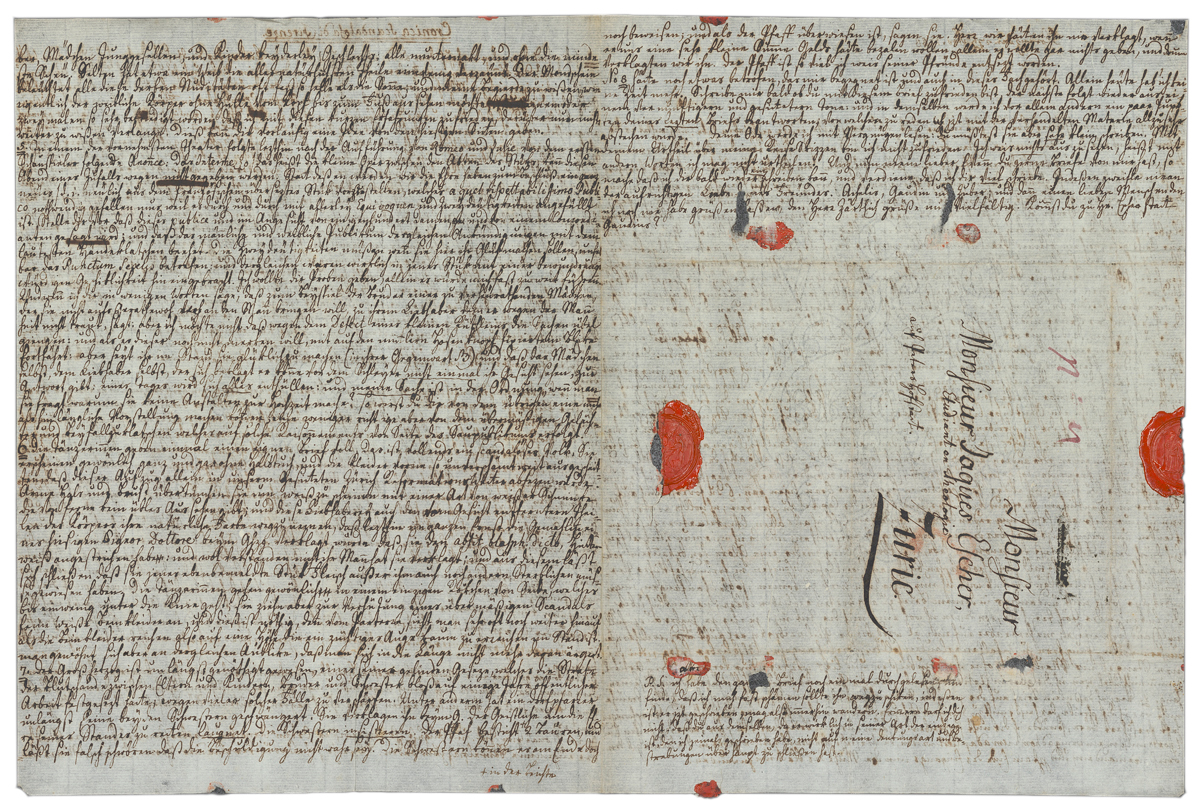
You can use and research the family archives in the Manuscripts Reading Room at the ZB. Copyright terms apply to accessing some 20th and 21st-century materials.
The connections between Zurich families are reflected in the archives, which offer countless cross-references. It’s also worthwhile searching in ‘related’ family archives.
Research options:
- ‘Family archives catalogue’ by Jean-Pierre Bodmer, 1996 edition
- zbcollections.ch, our archive portal
- swisscollections.ch, the portal for historic collections in Swiss libraries and archives, includes letters from the ZB family archives.
- You will also find documents from the family archives on our platforms e-manuscripta.ch, for manuscripts, and e-rara.ch, for old prints.
- Other unpublished finding aids are available in the Manuscripts Reading Room.
- Our extensive family history reference works by Erhard Dürsteler and Carl Keller-Escher are searchable online.
Order the documents you wish you to view direct from zbcollections.ch or by email to the Manuscripts Reading Room. We’re happy to help with any queries about the family archives.
Manuscripts
Monica Seidler-Hux, research team member, Manuscripts department
November 2022
Header image: Amberger family archive display (Monica Seidler-Hux, Peter Moerkerk / ZB Zürich)
